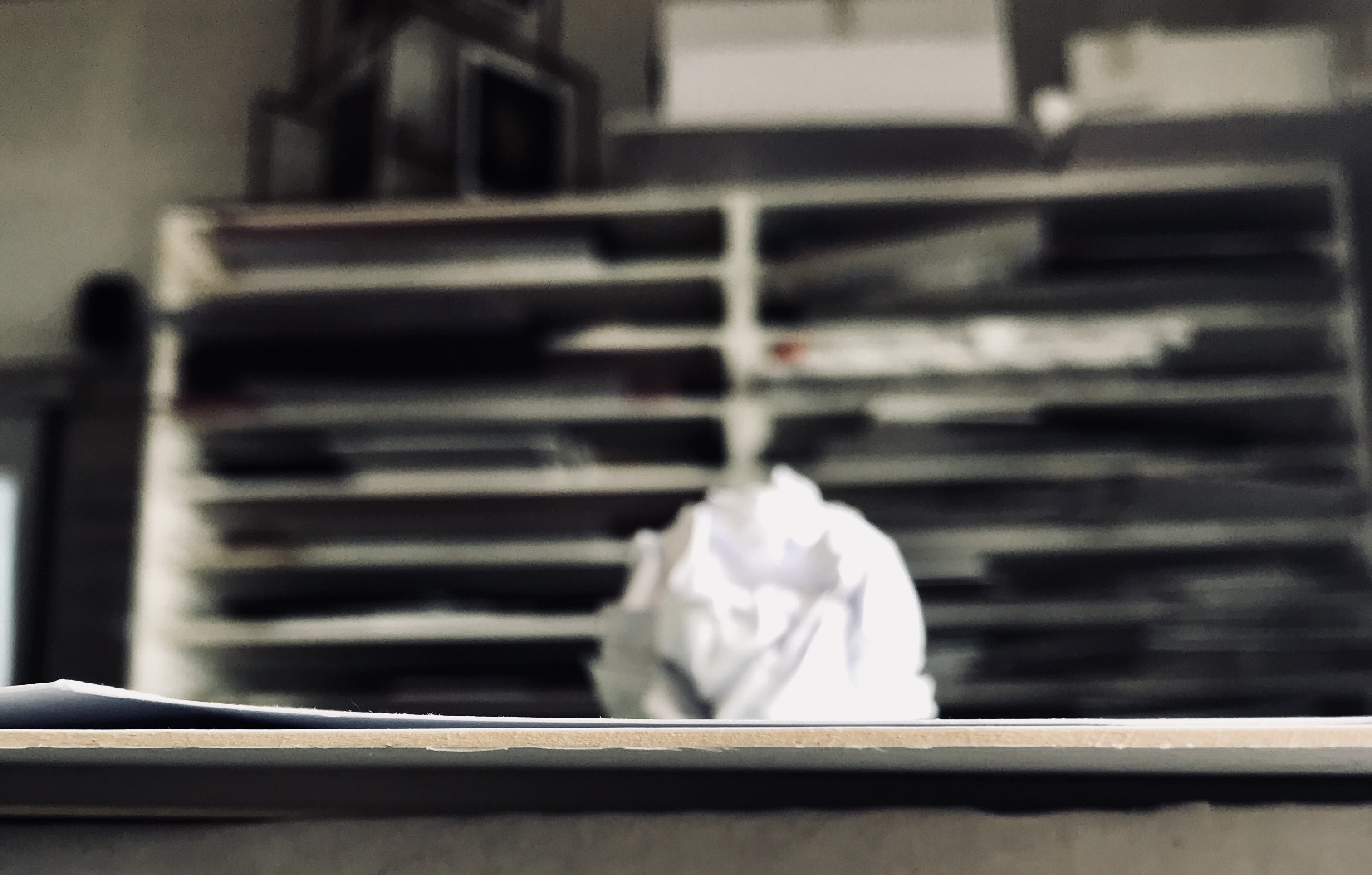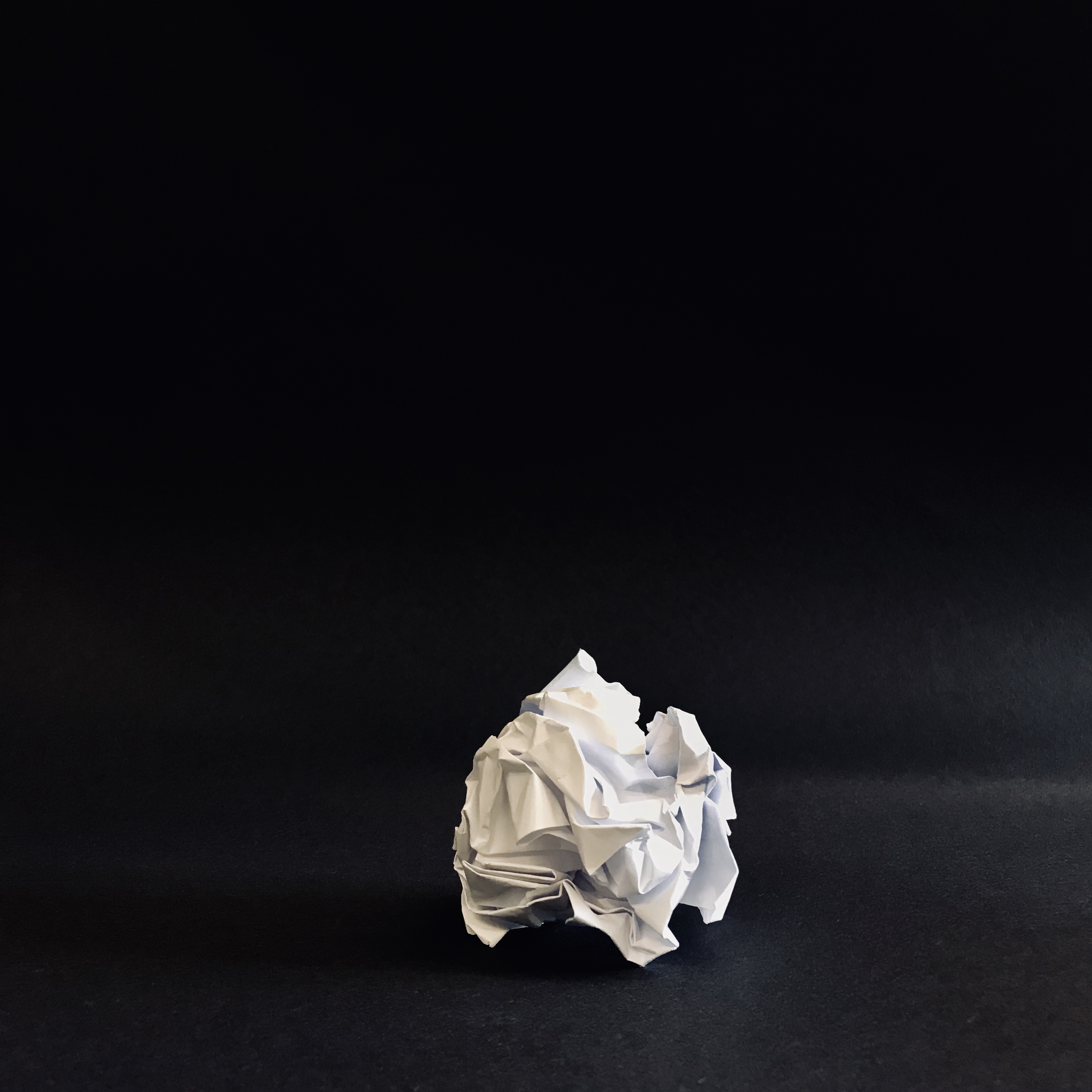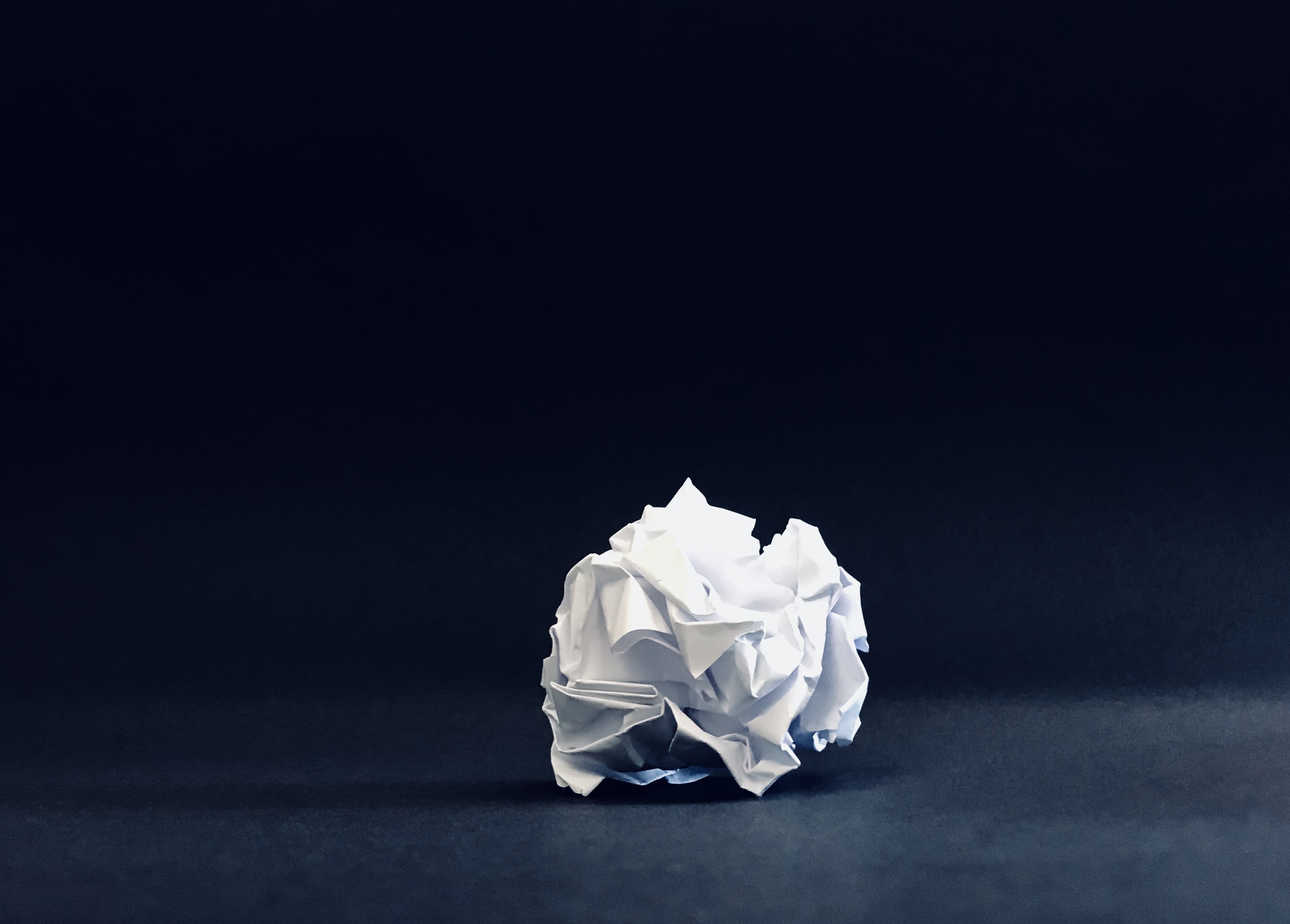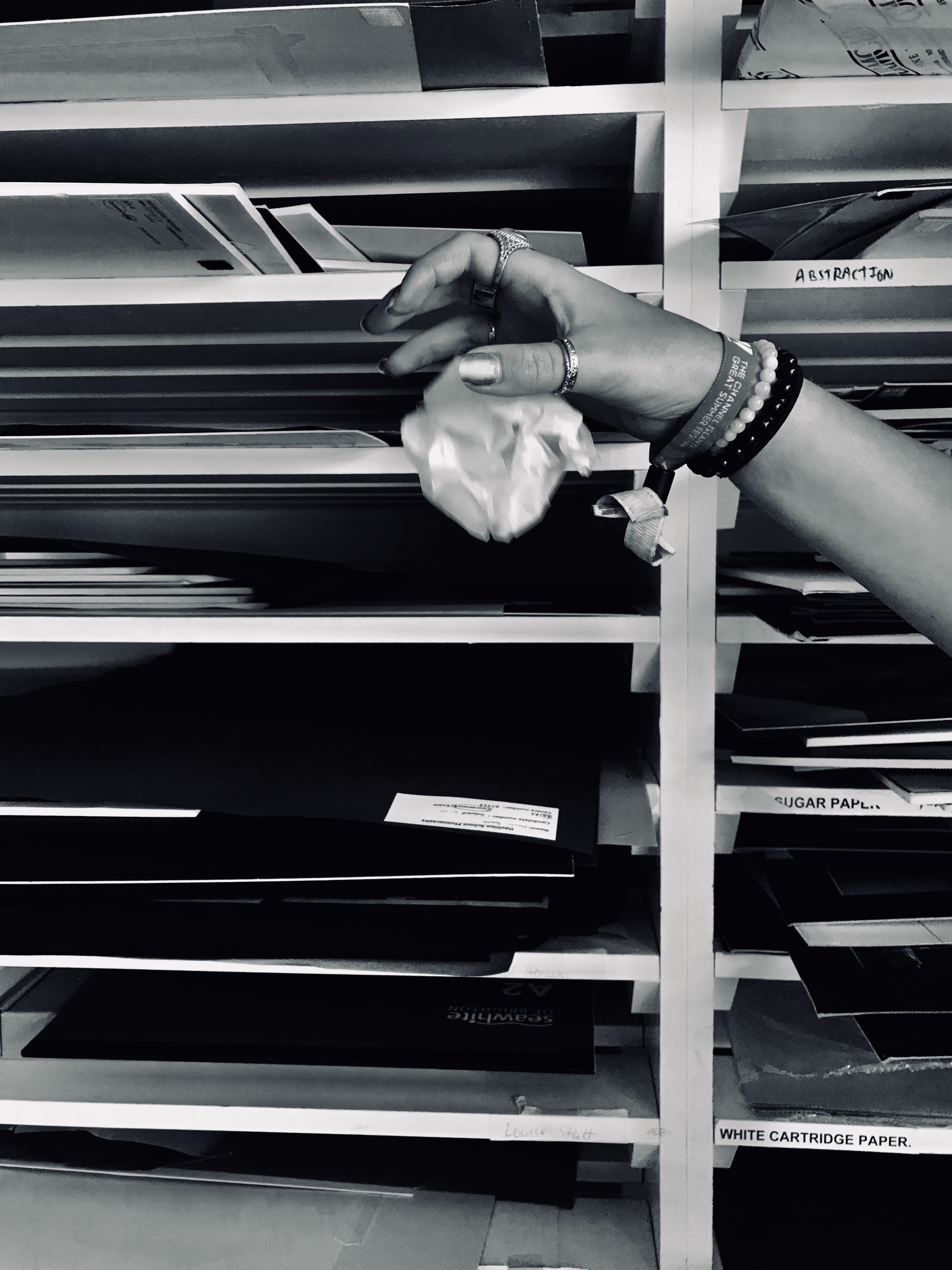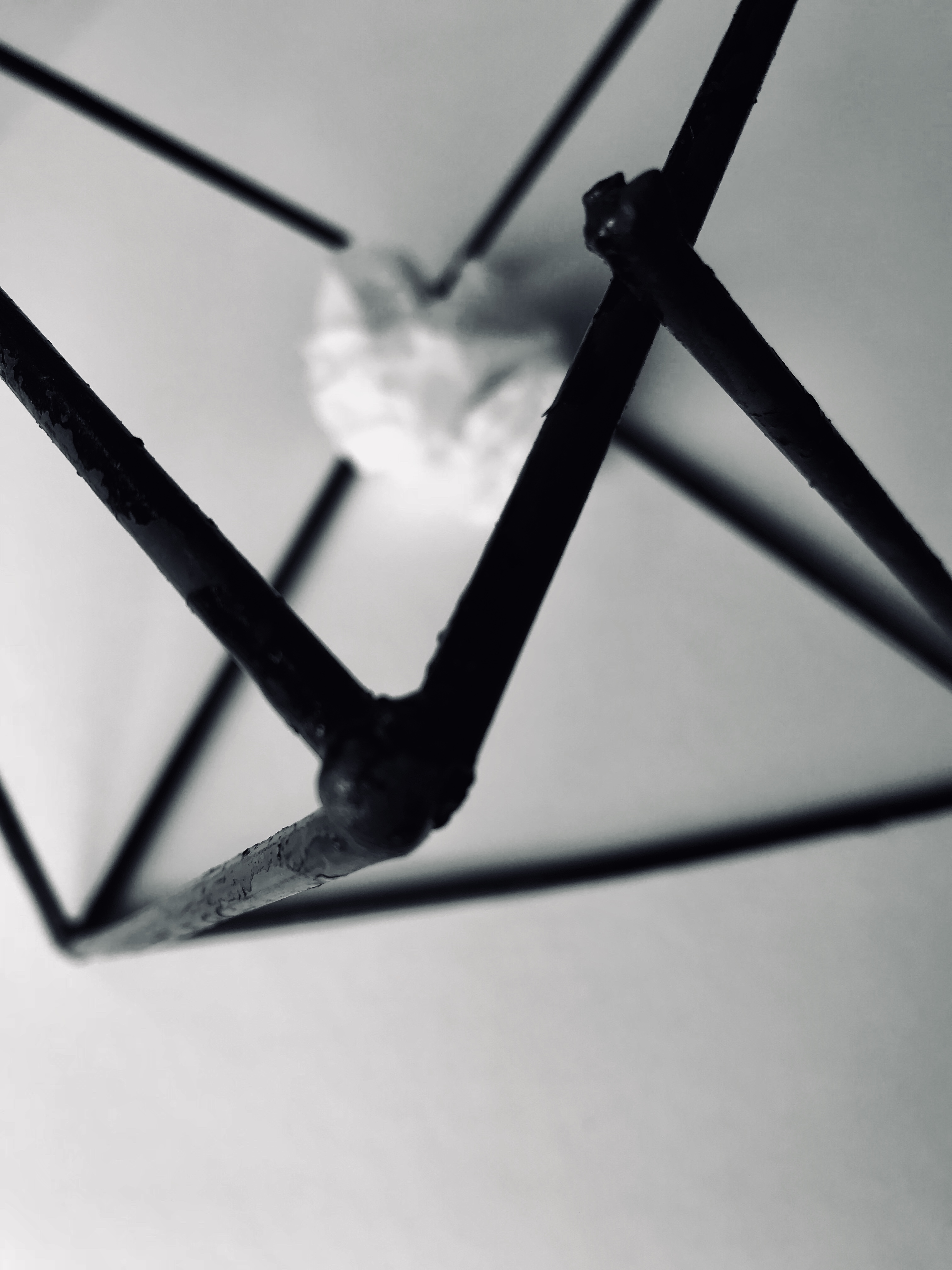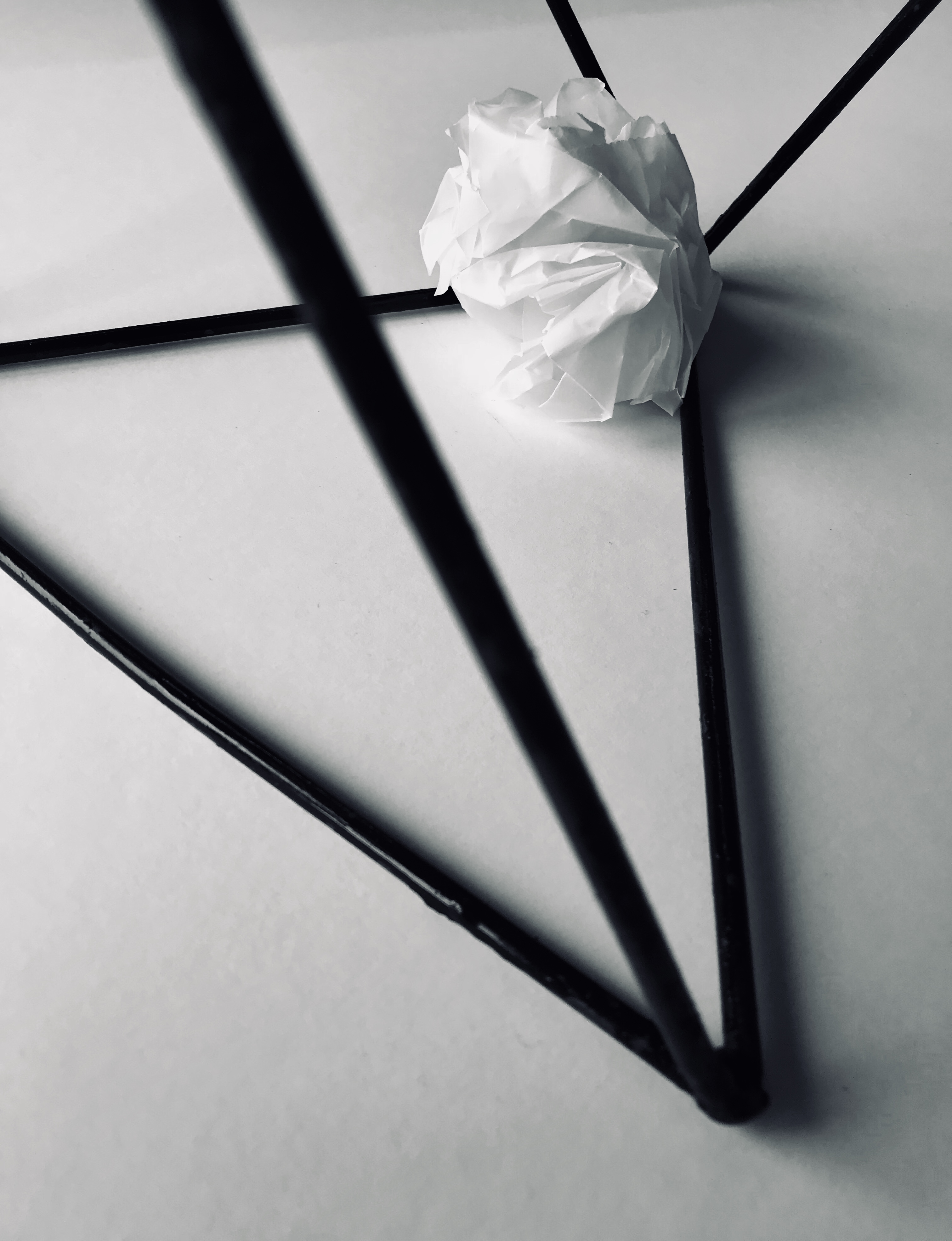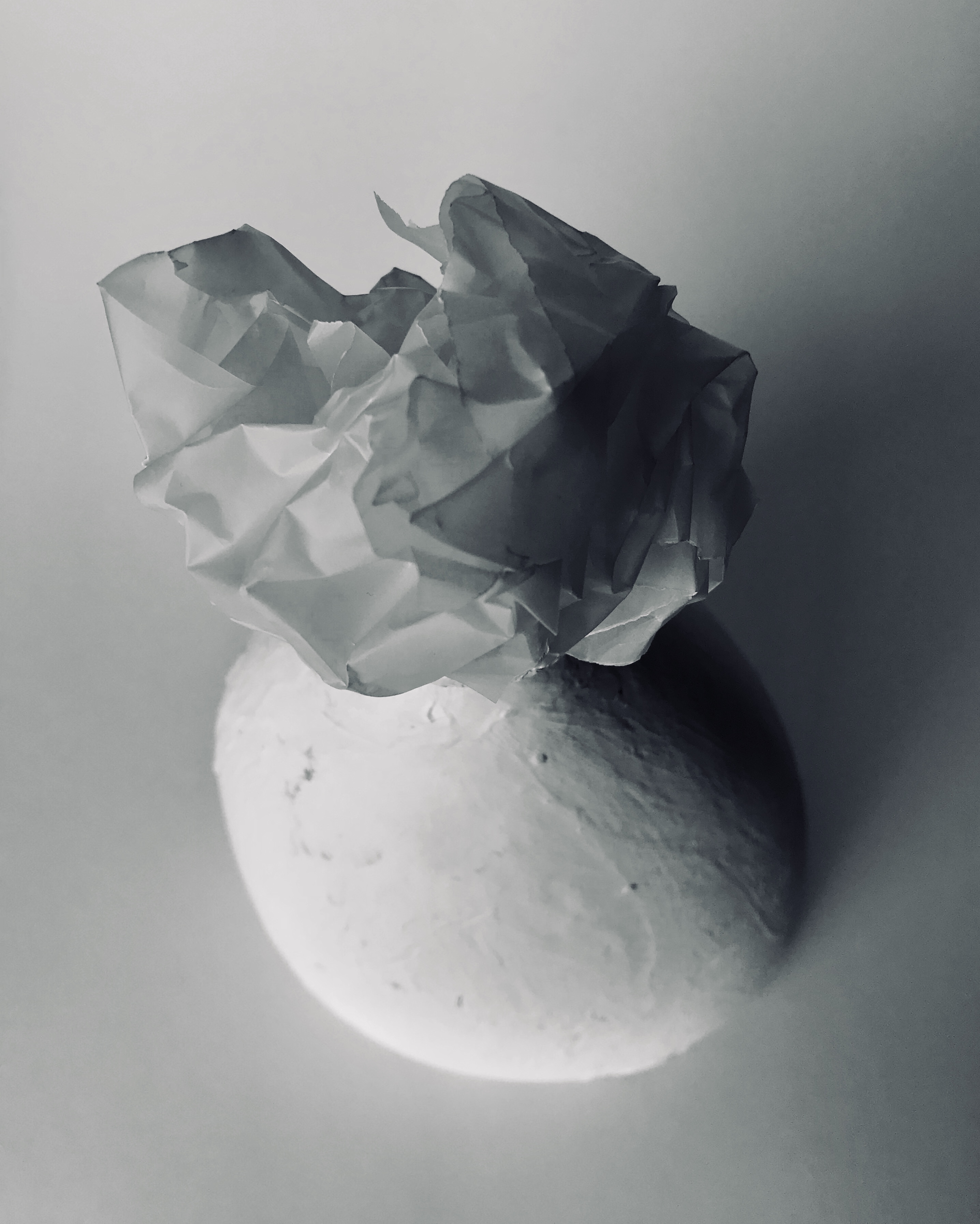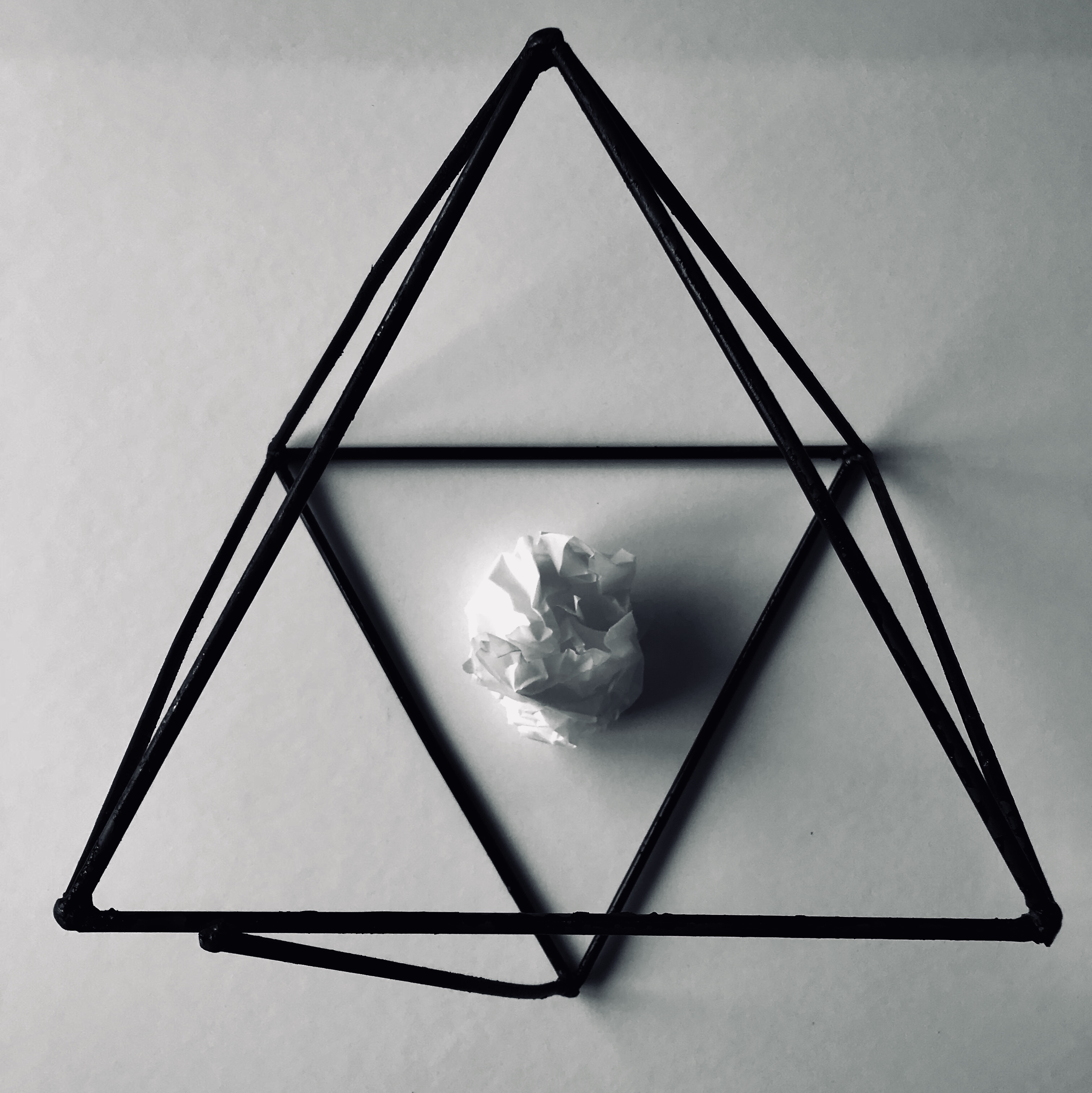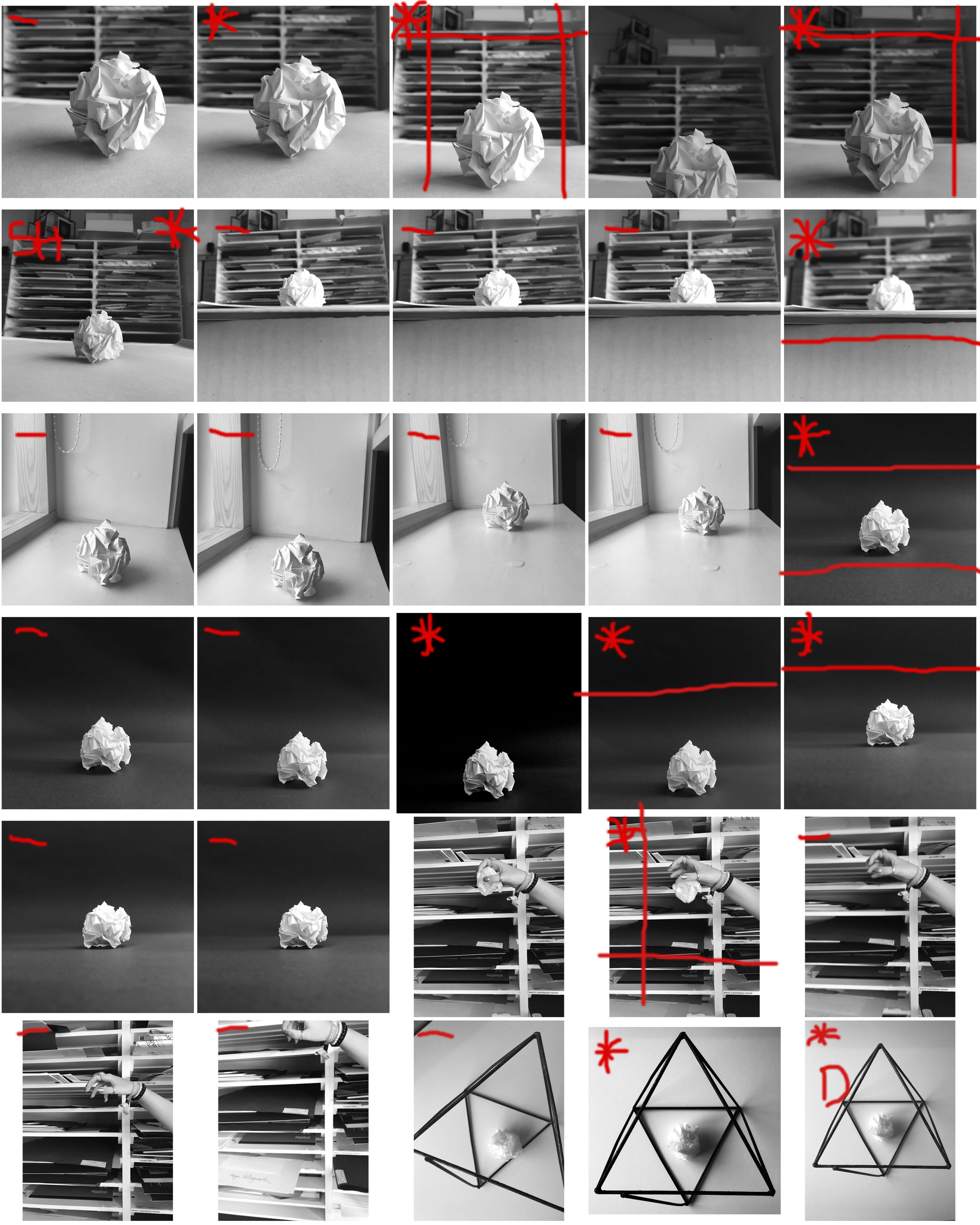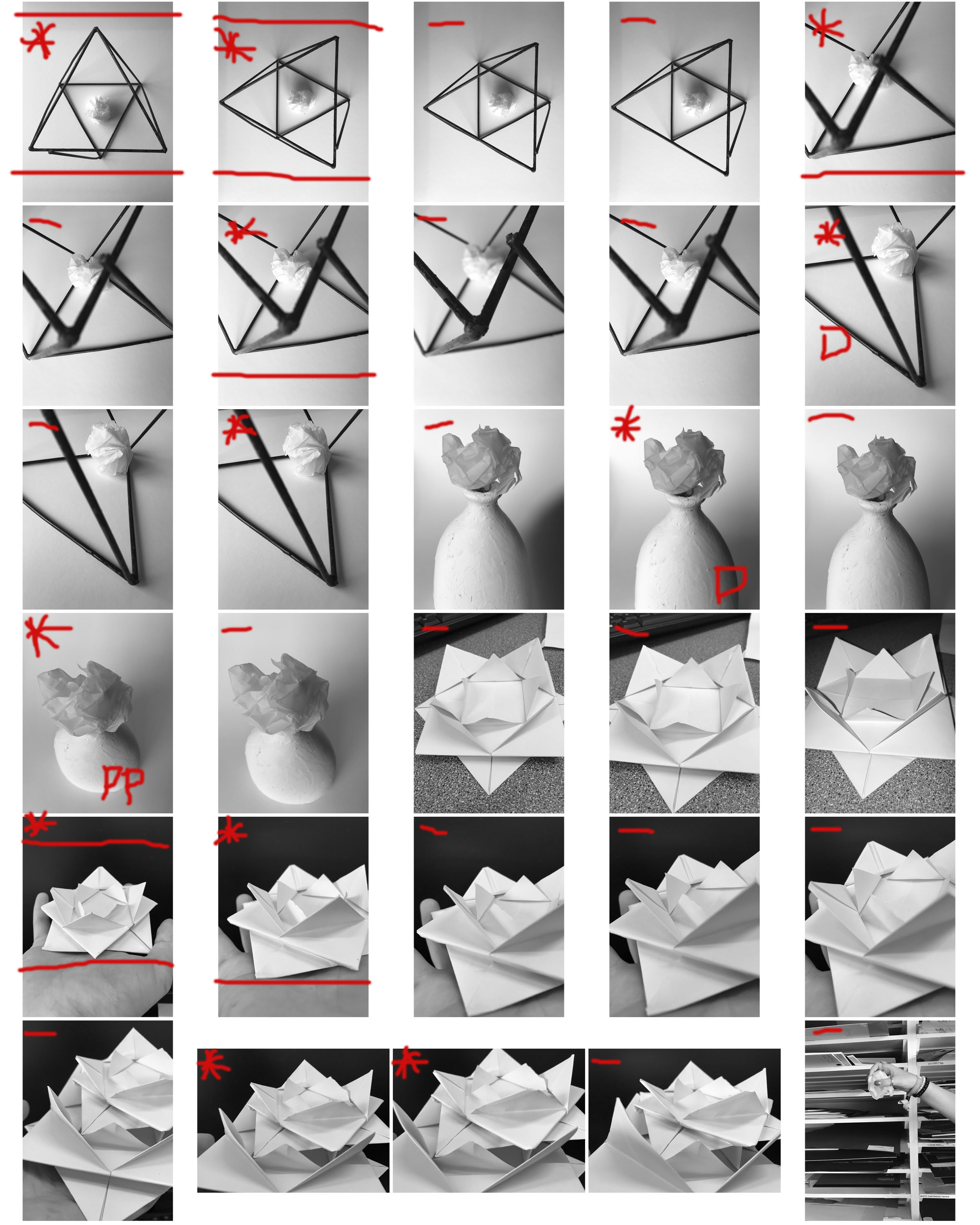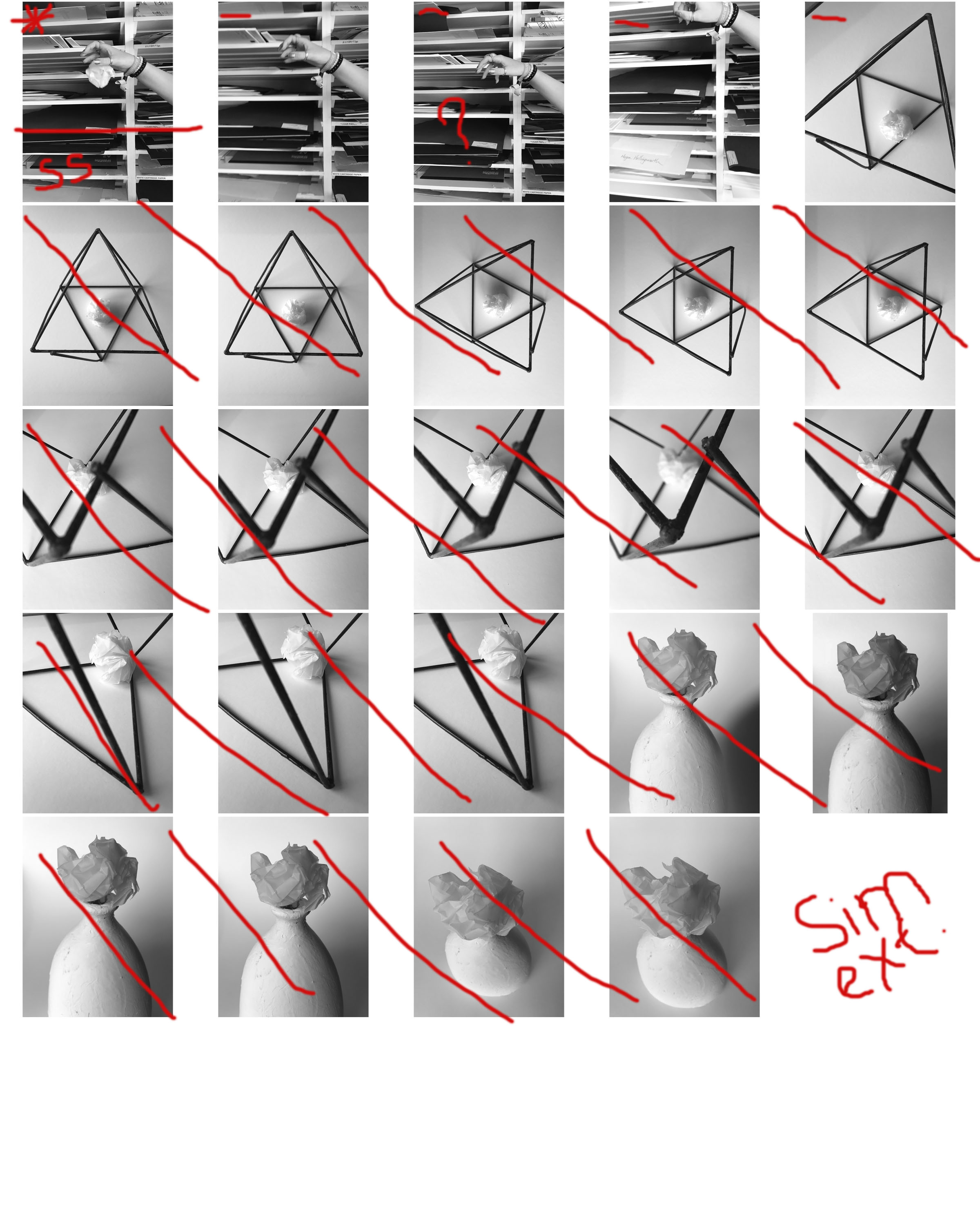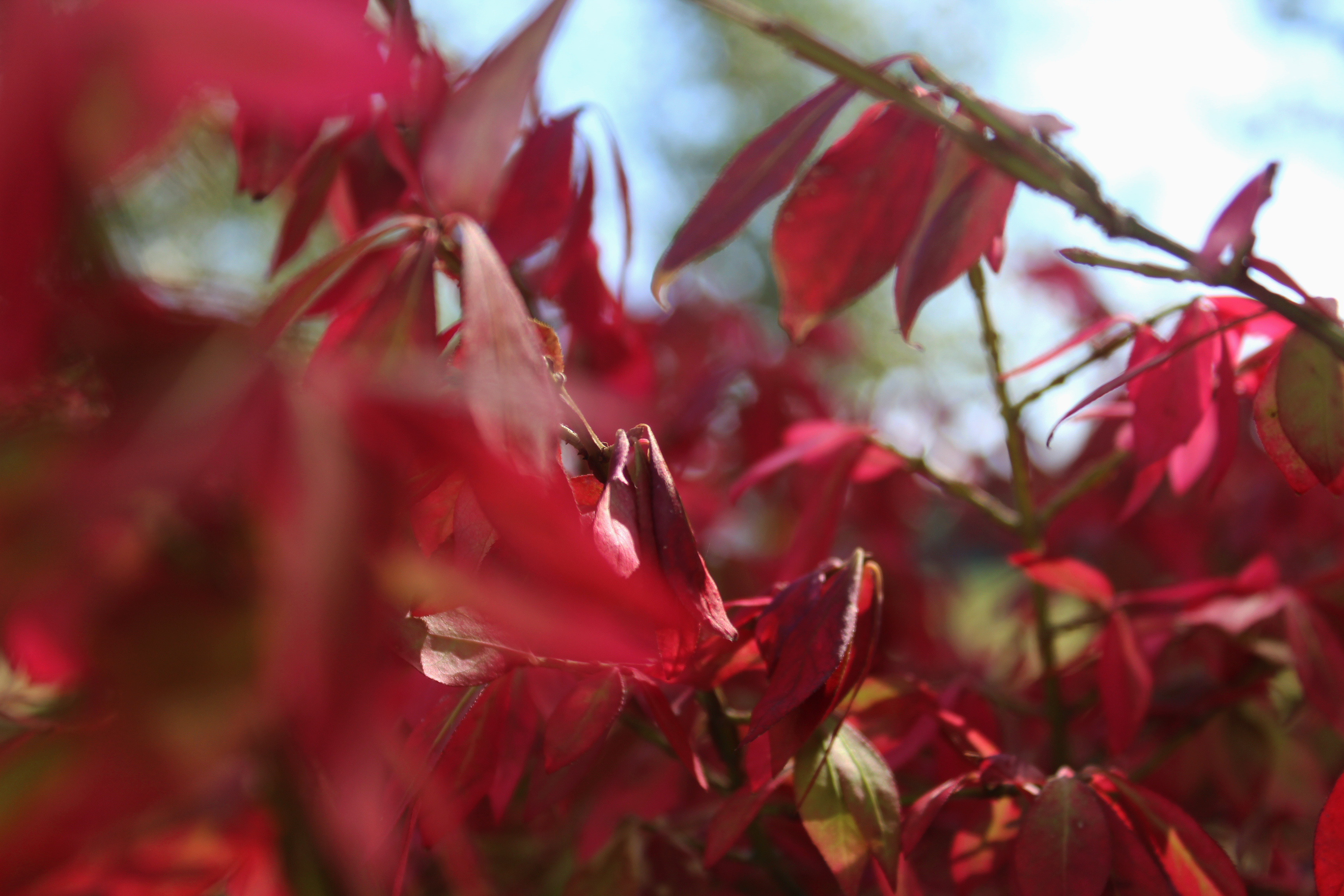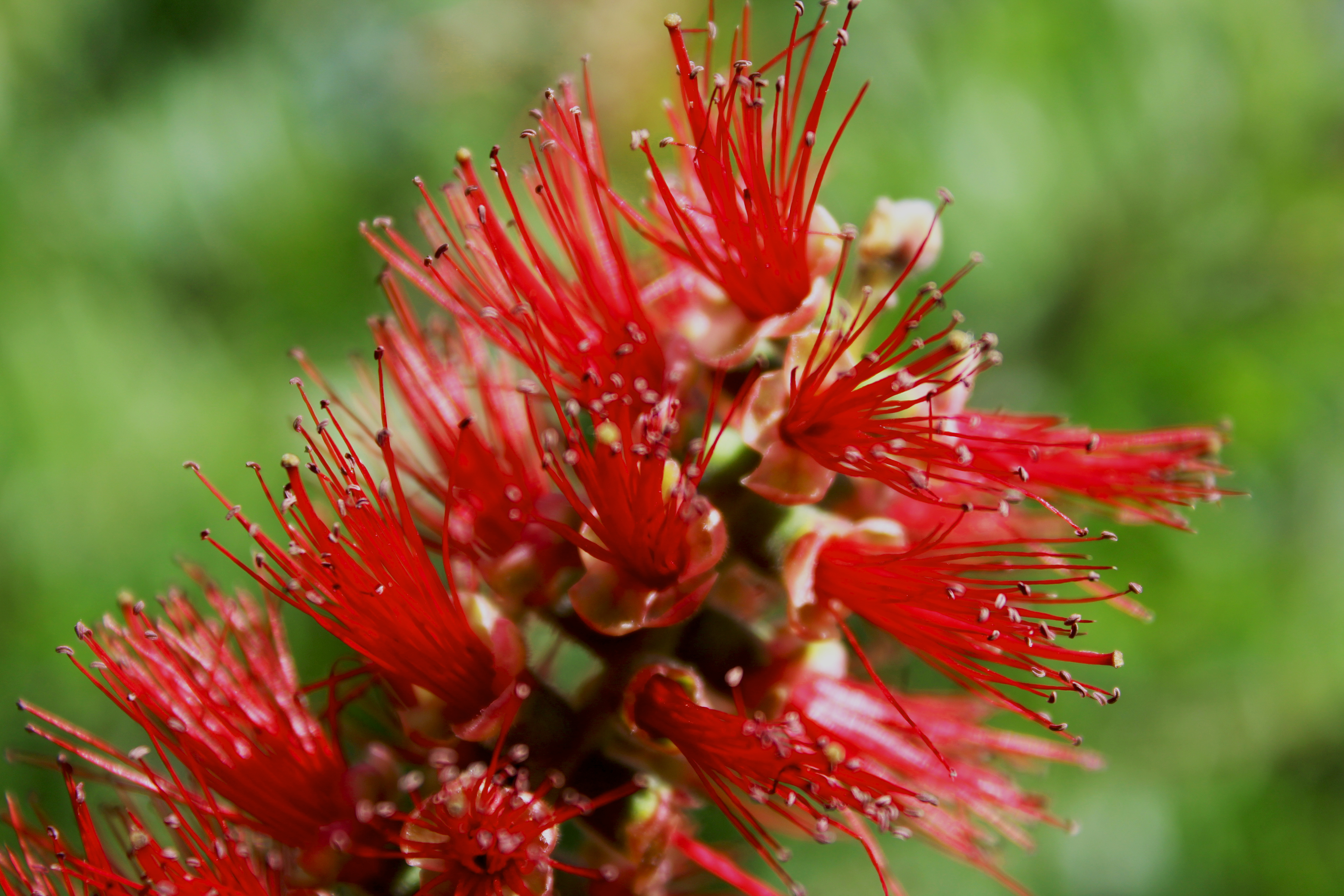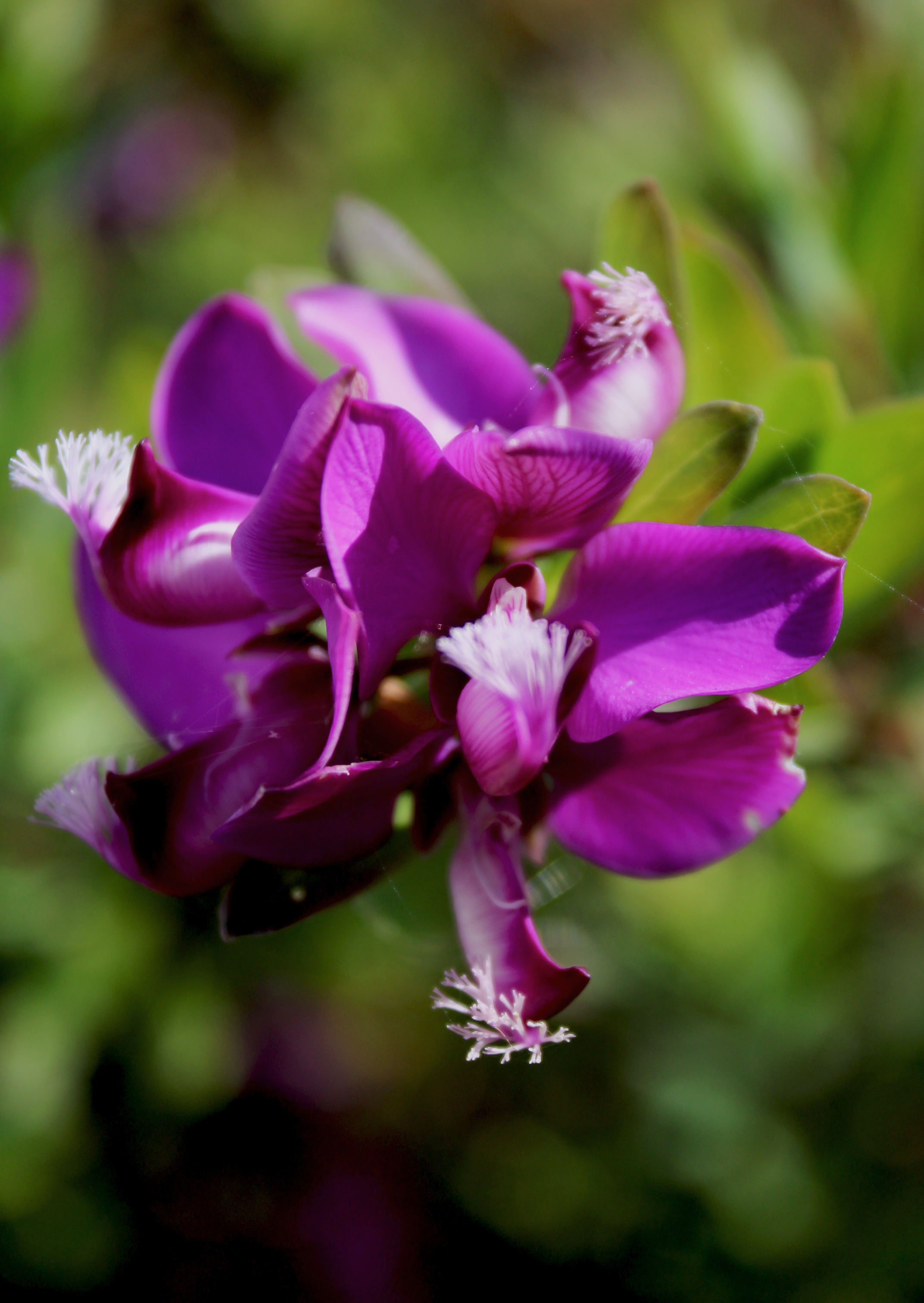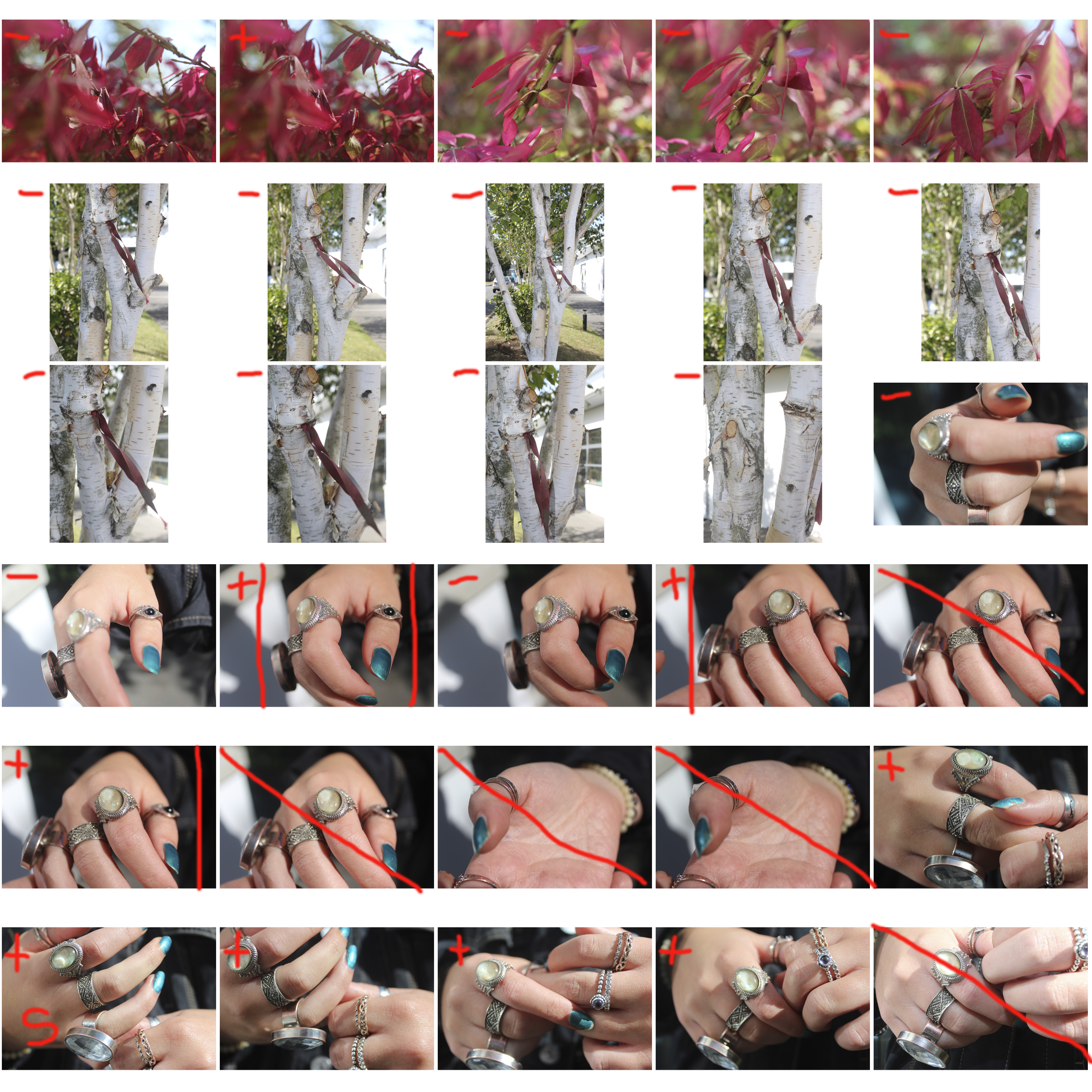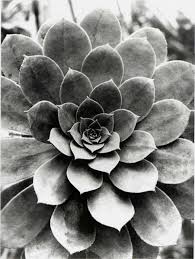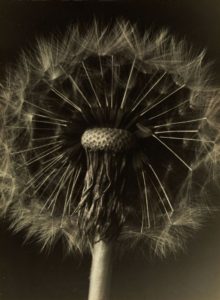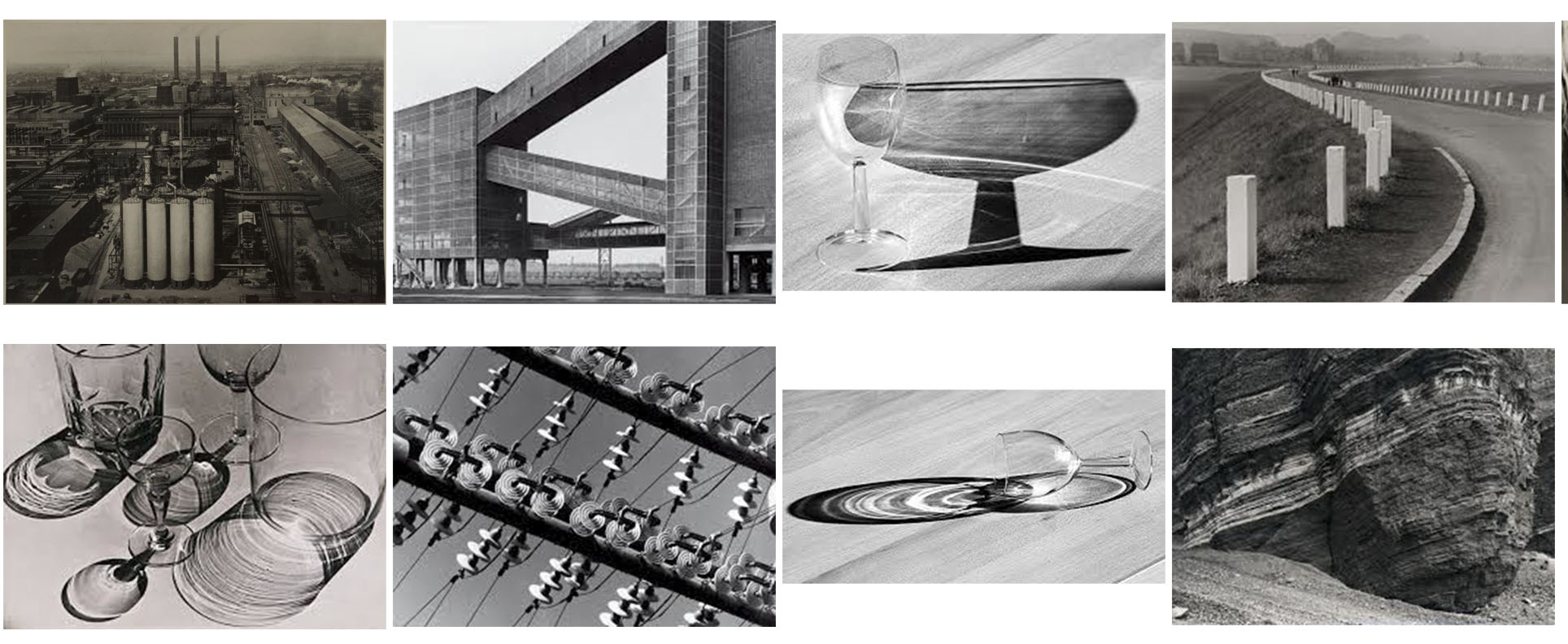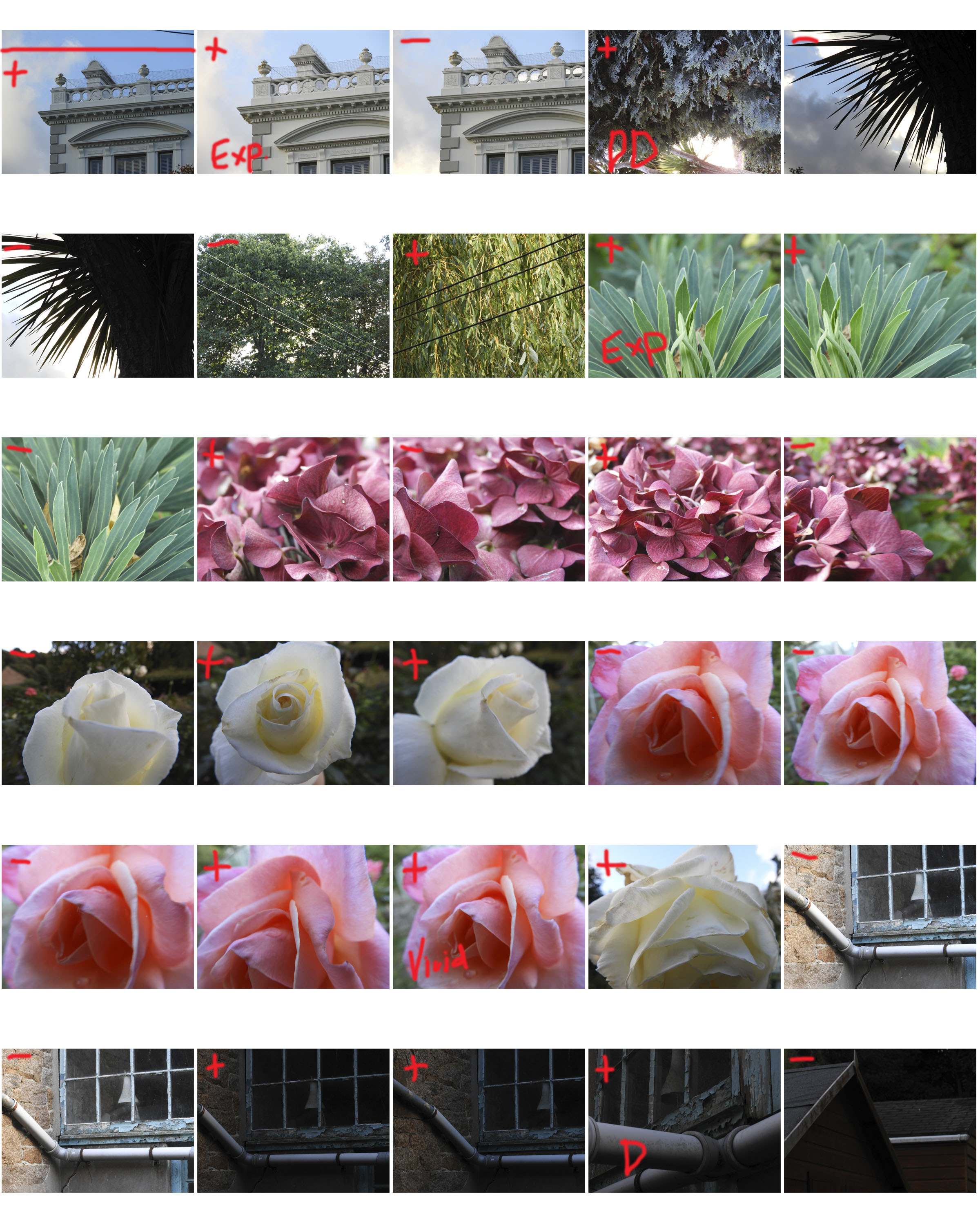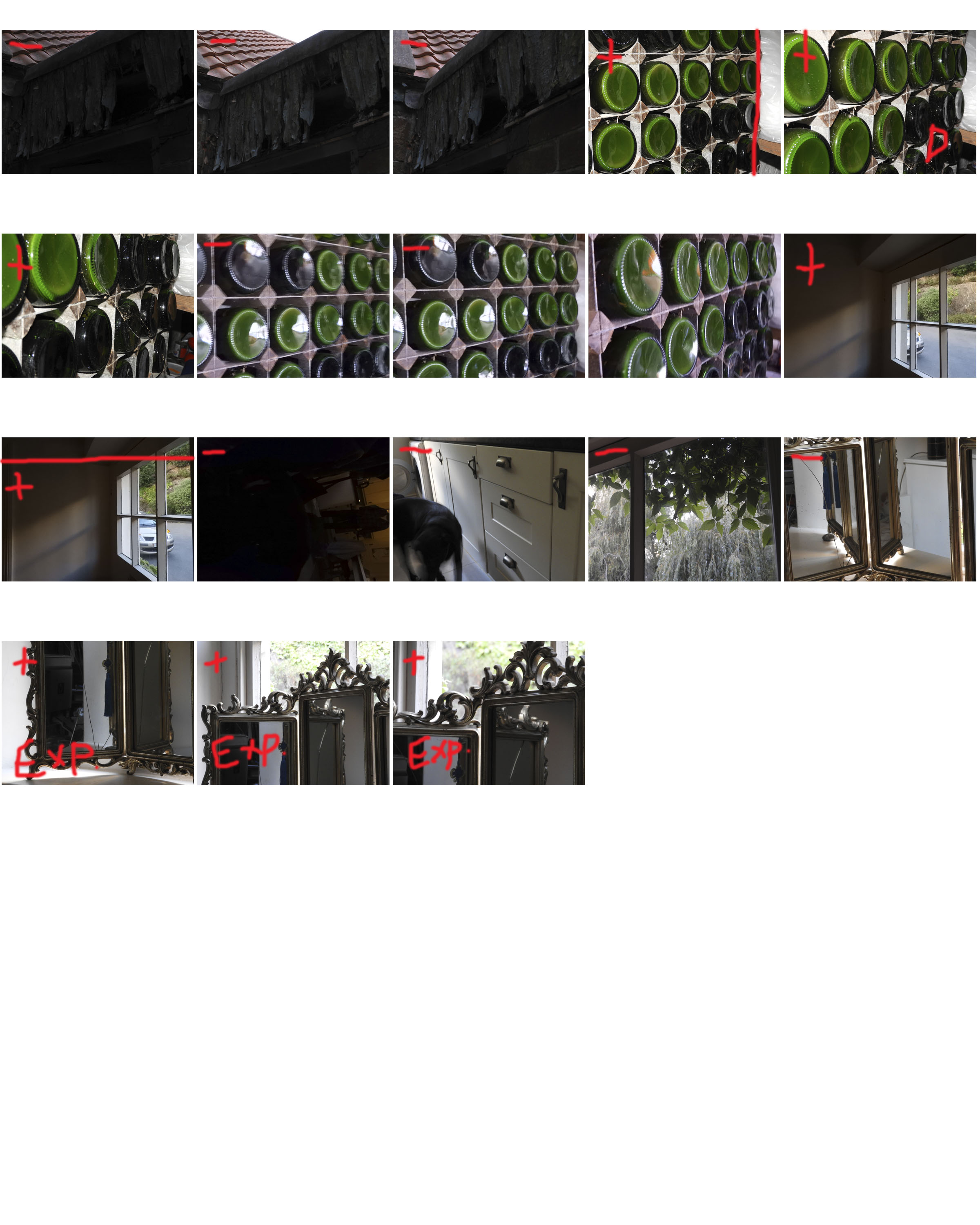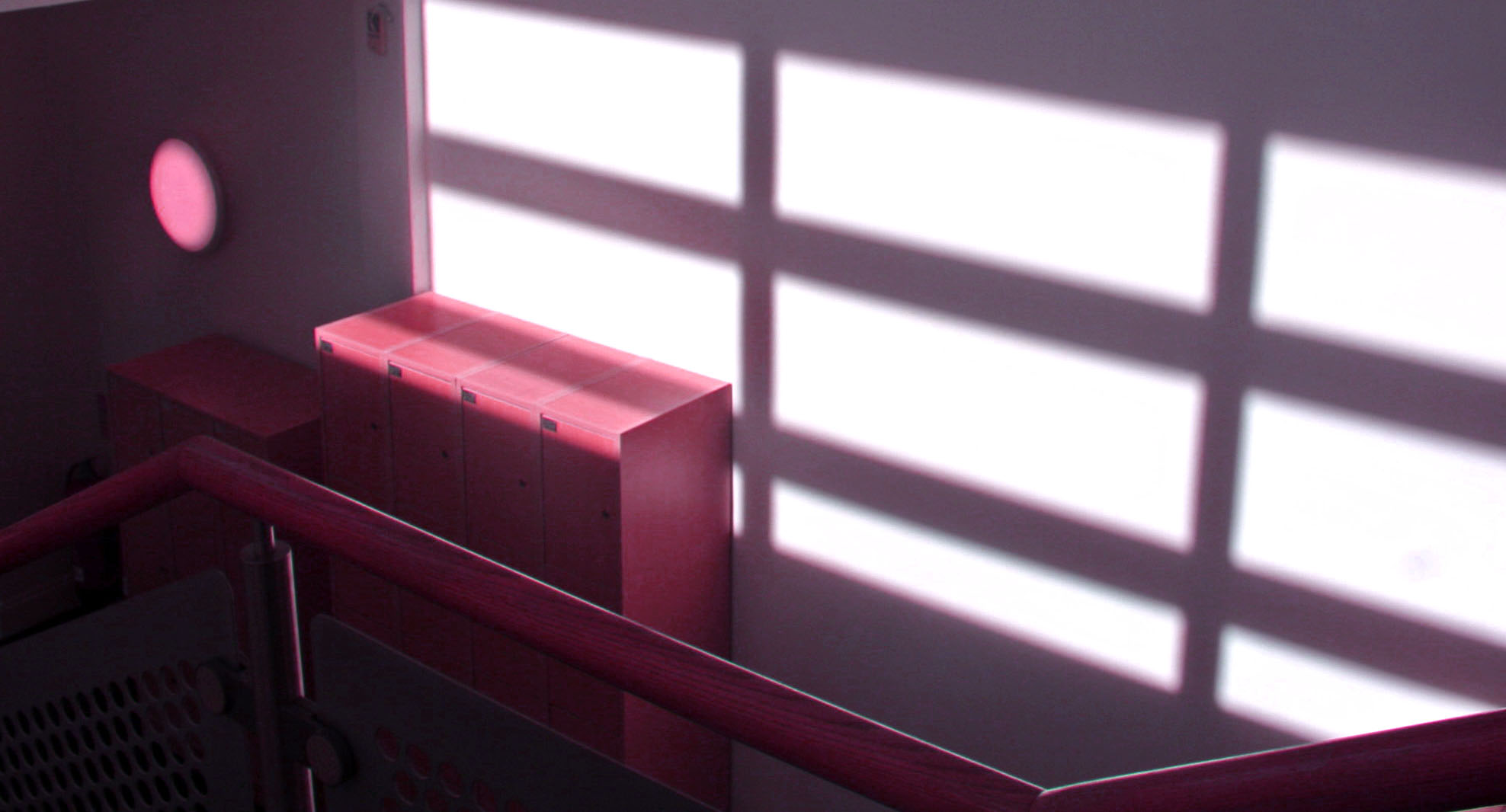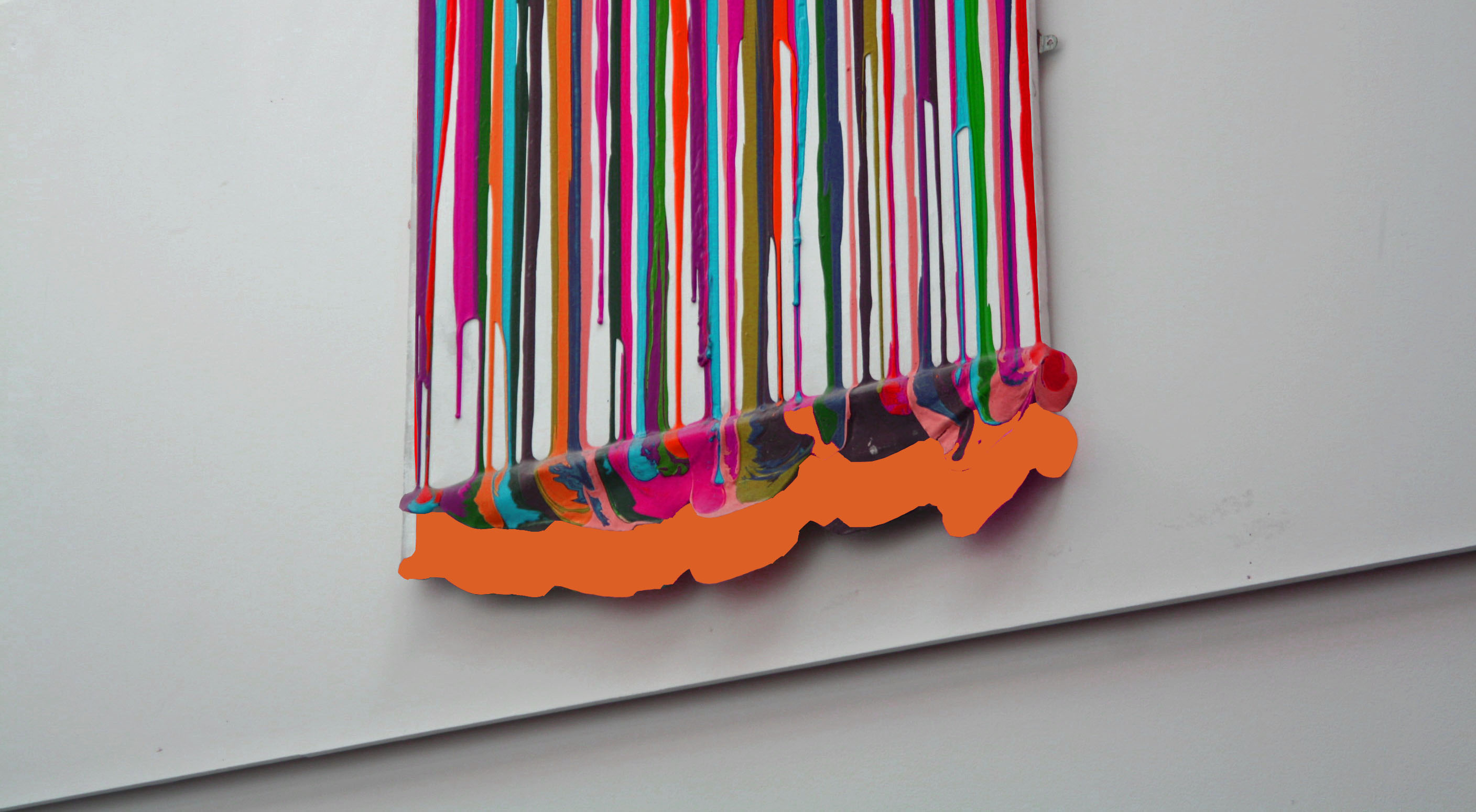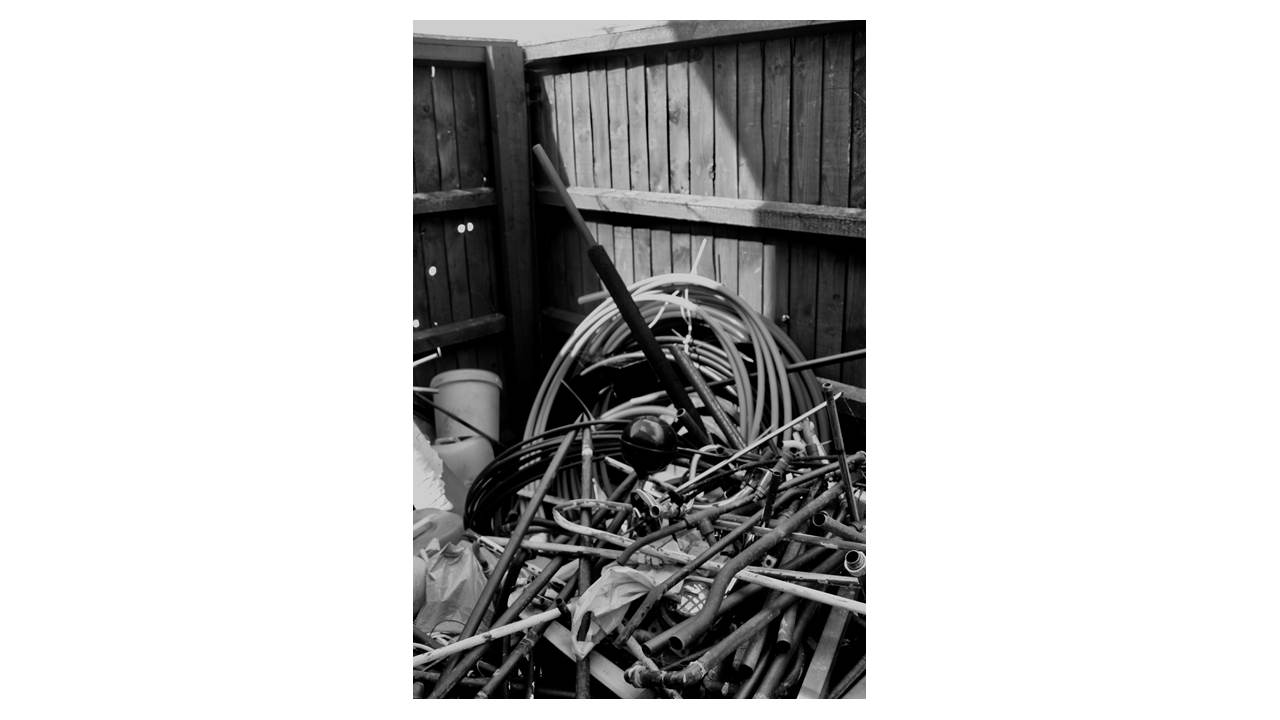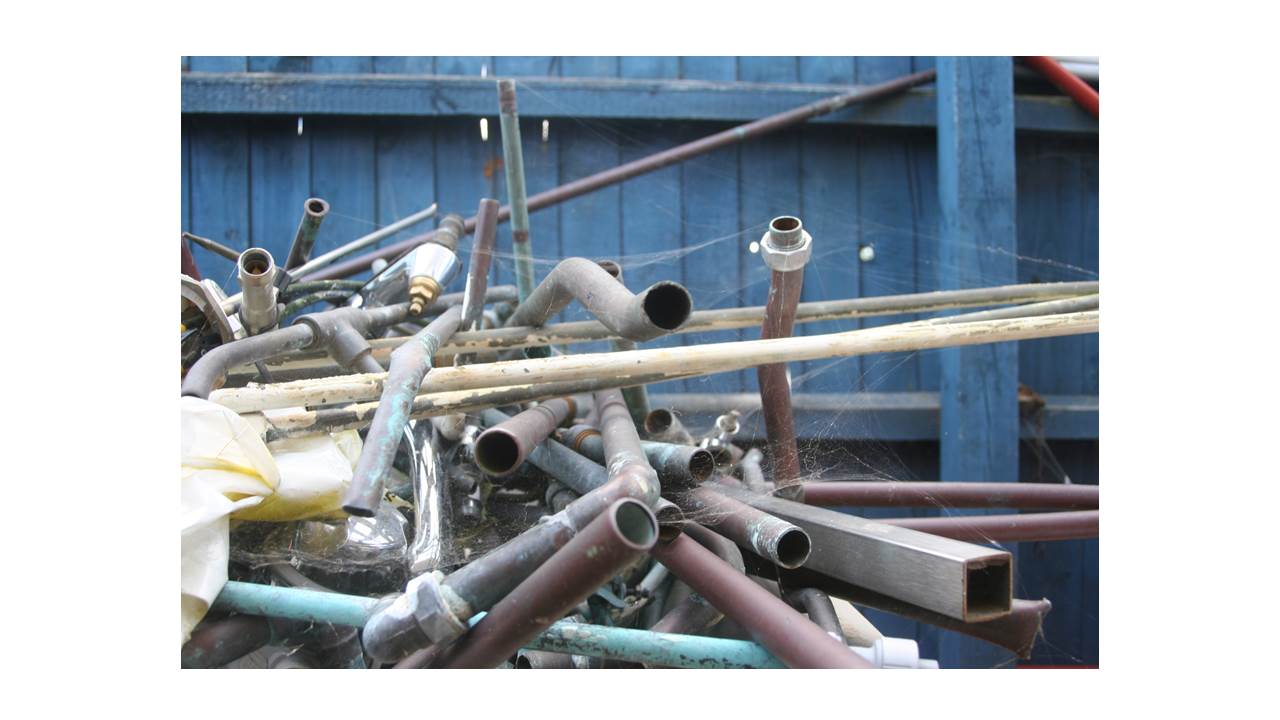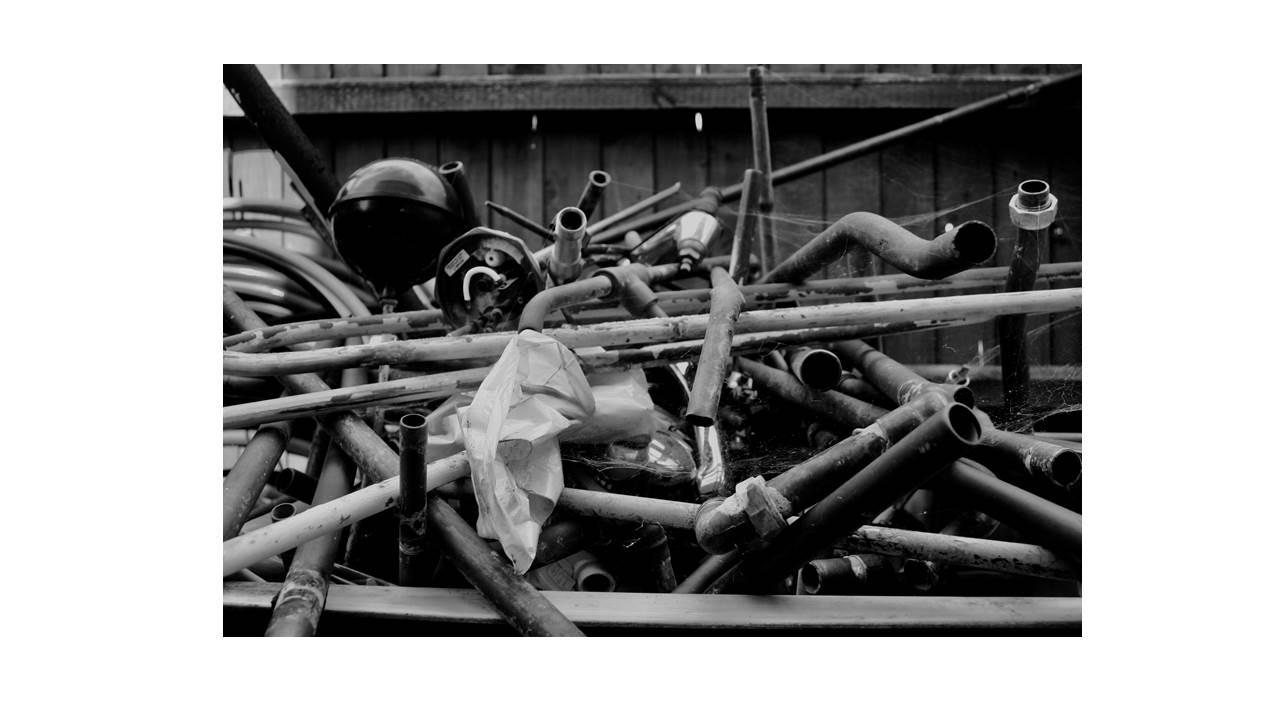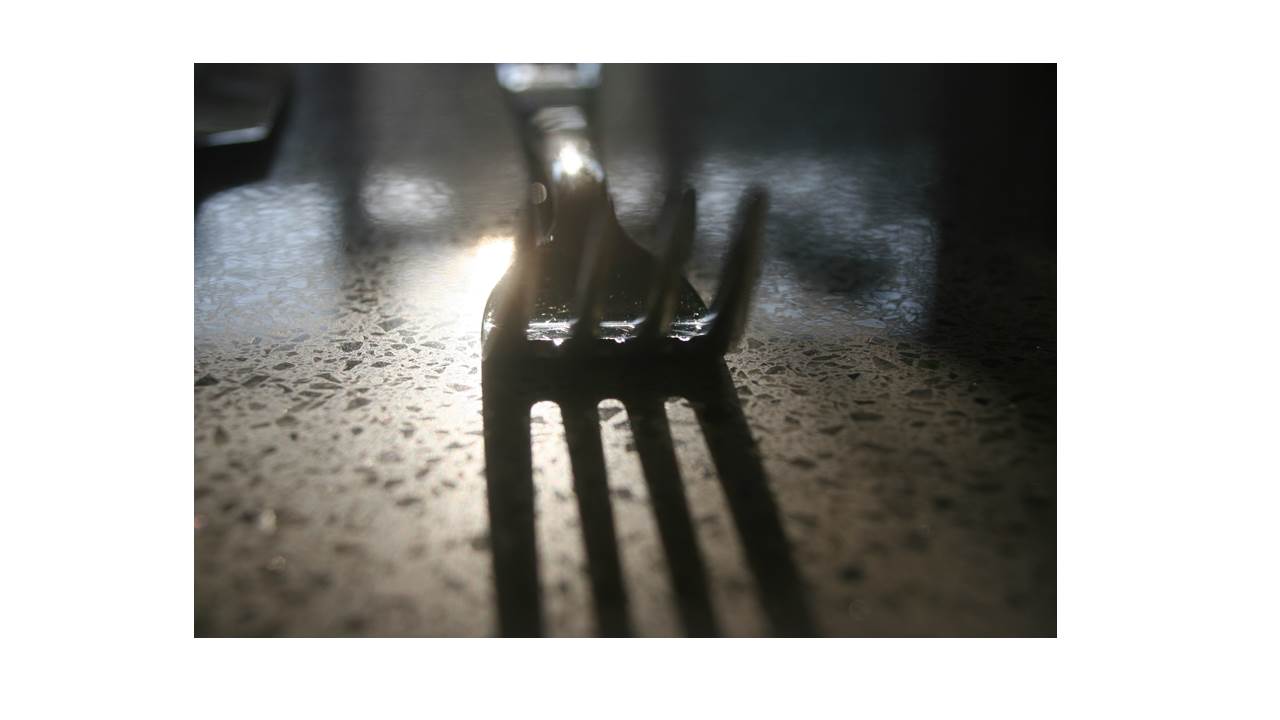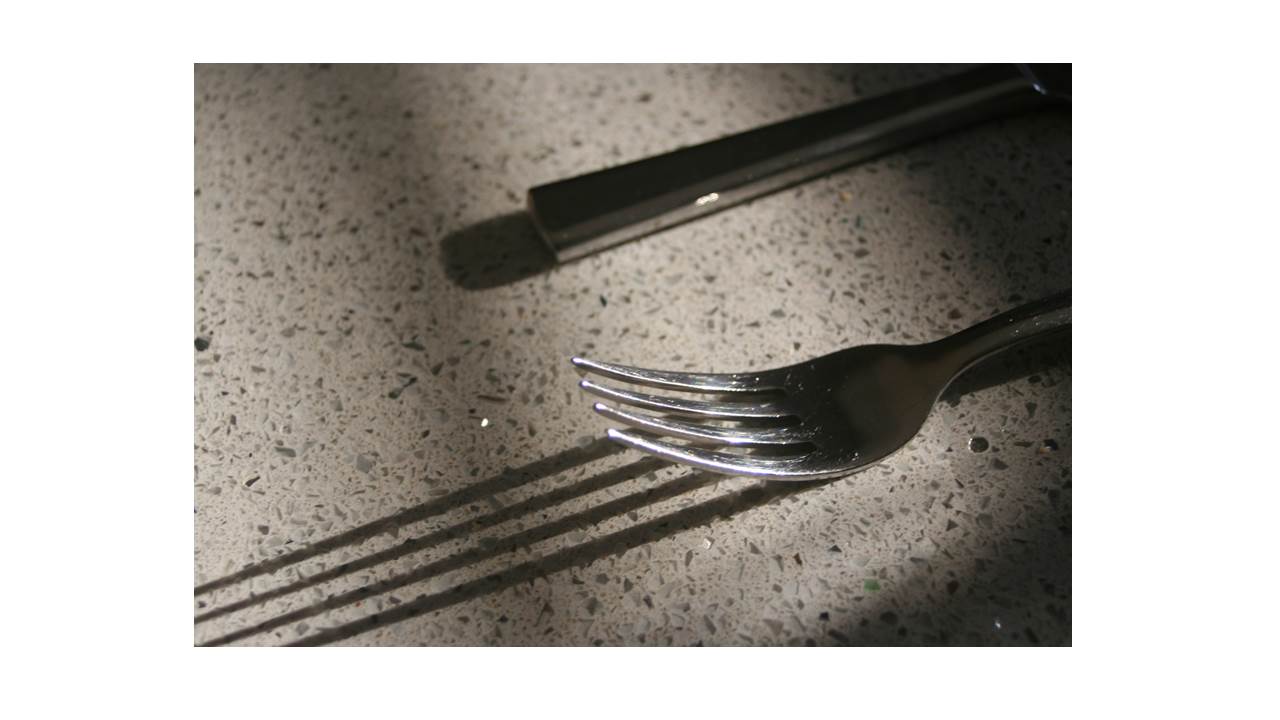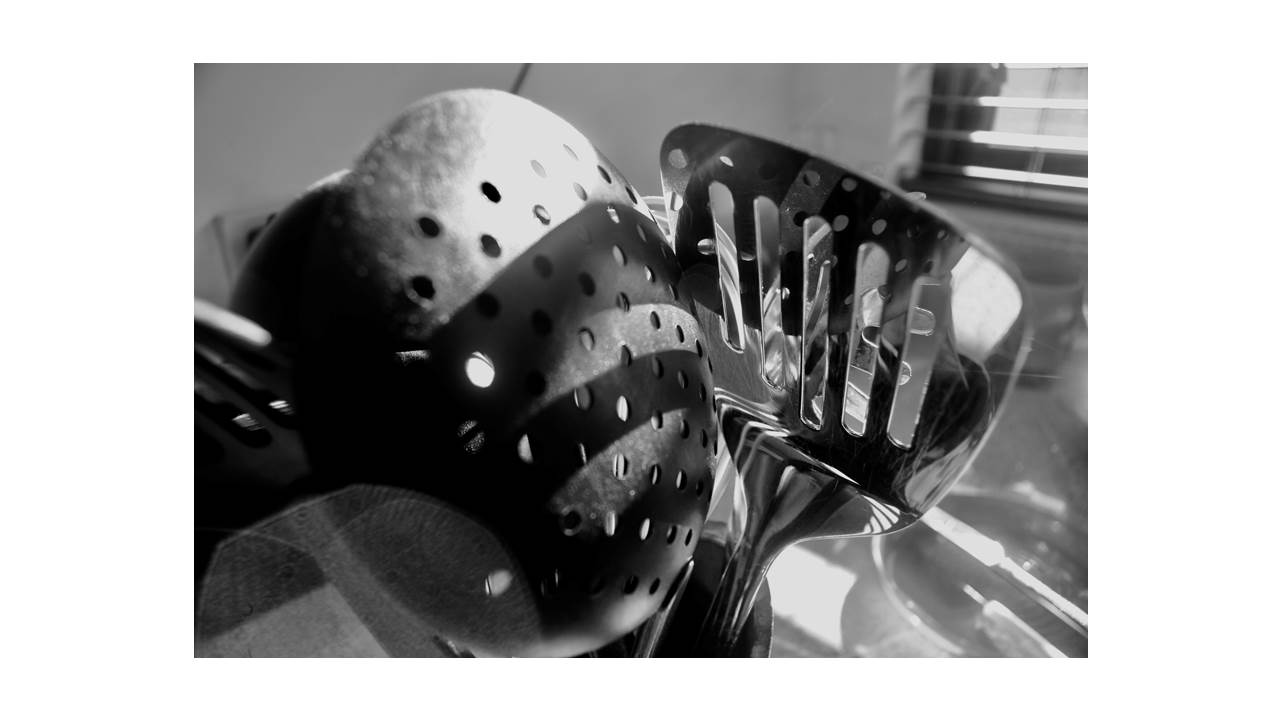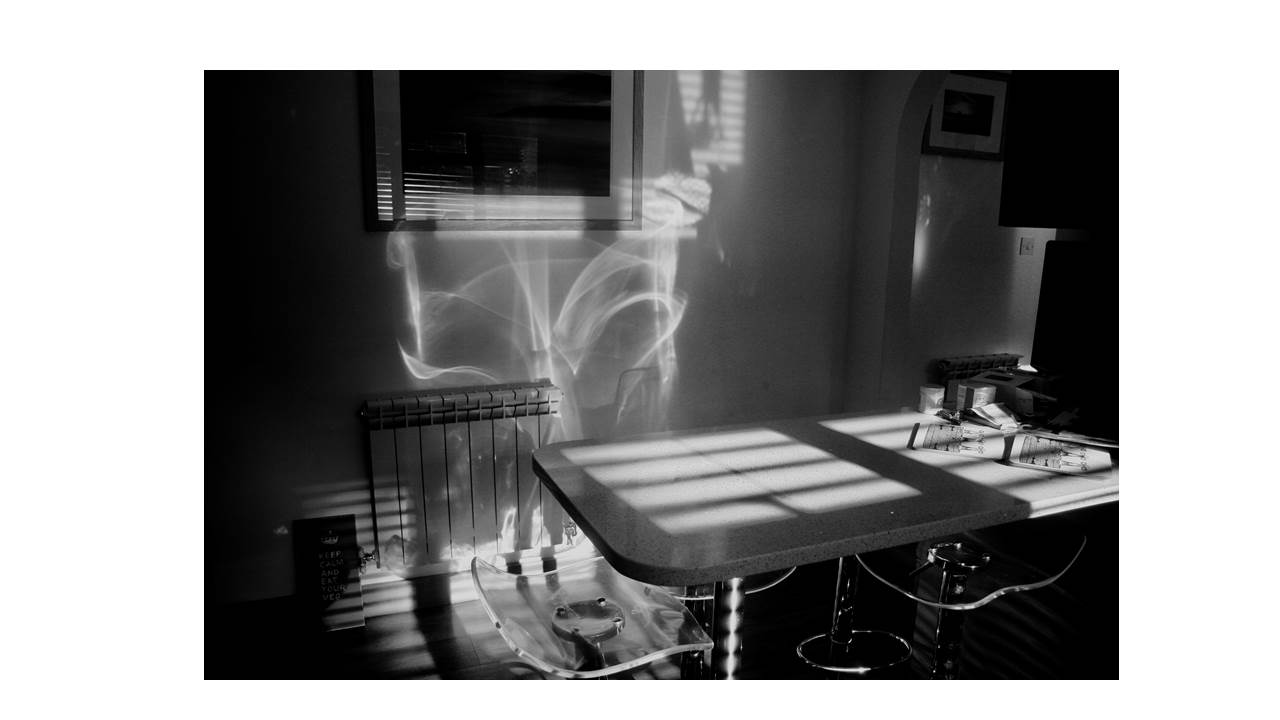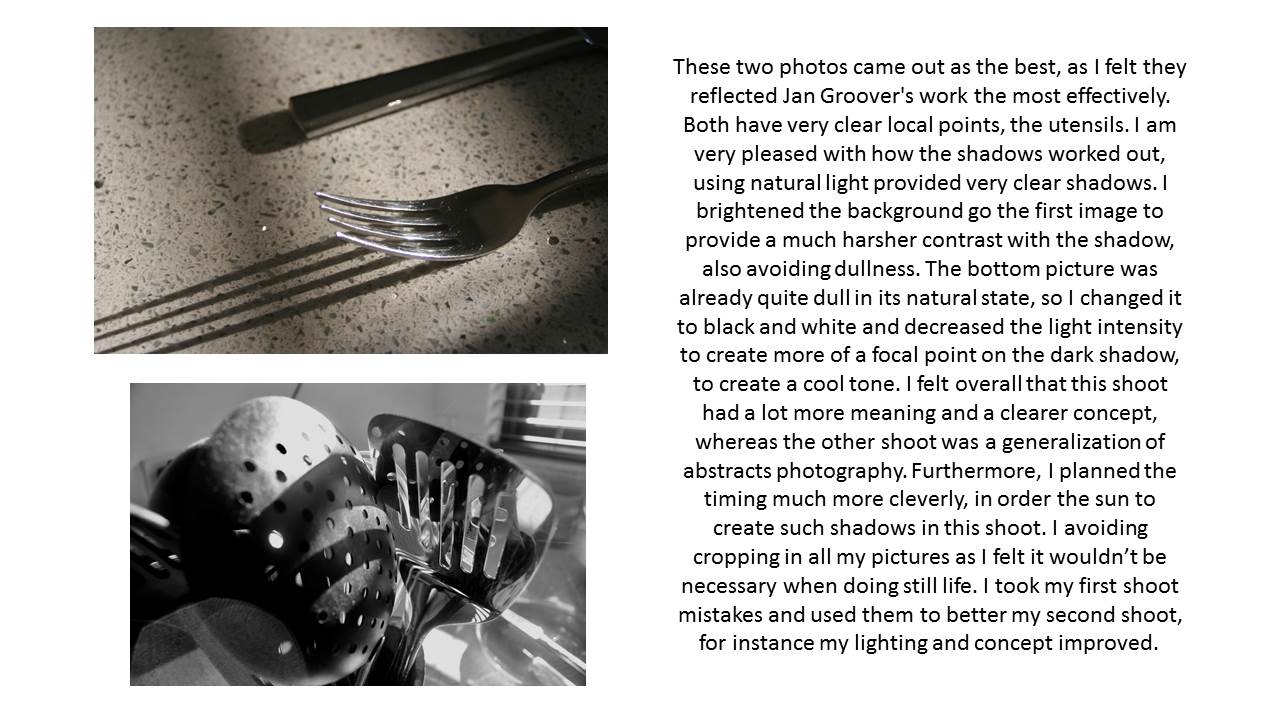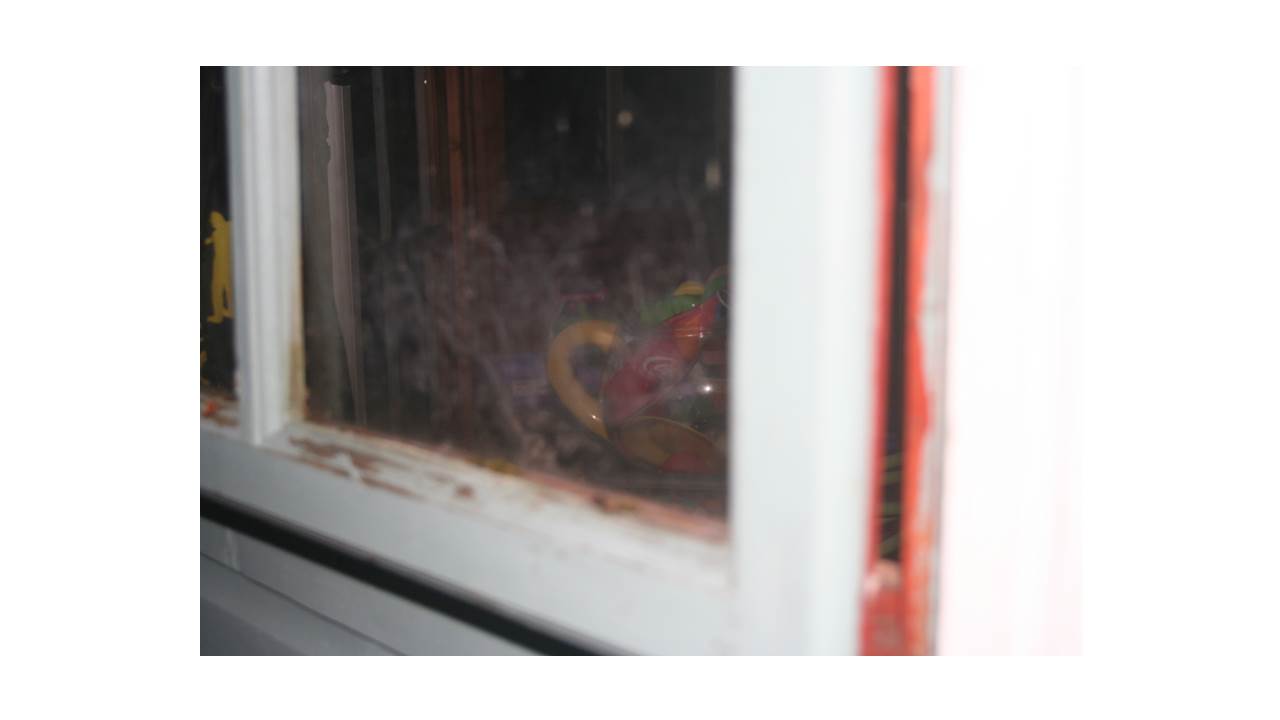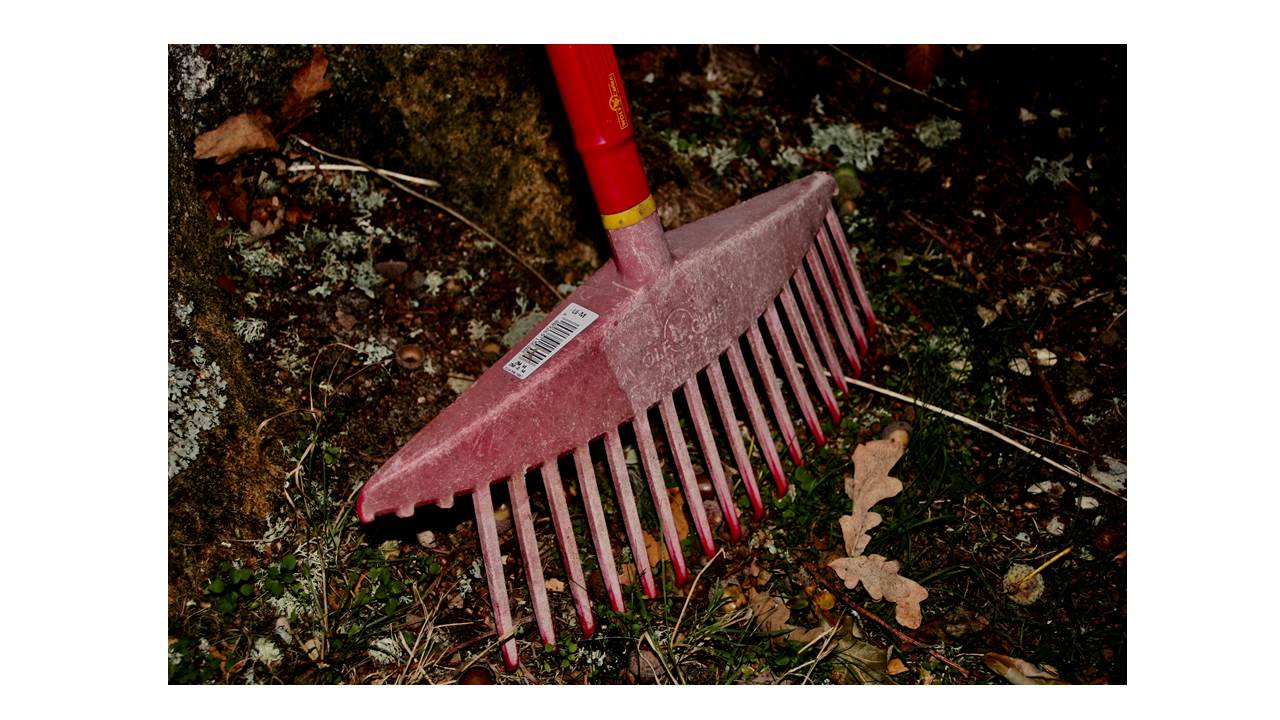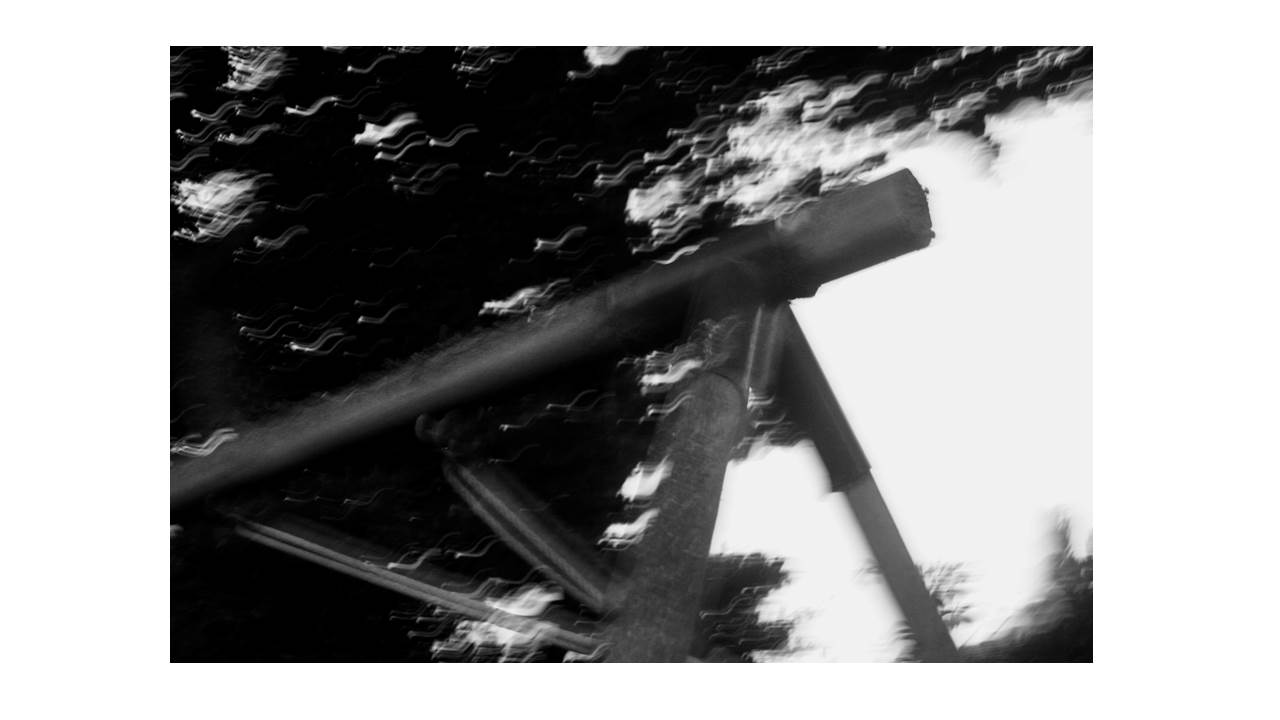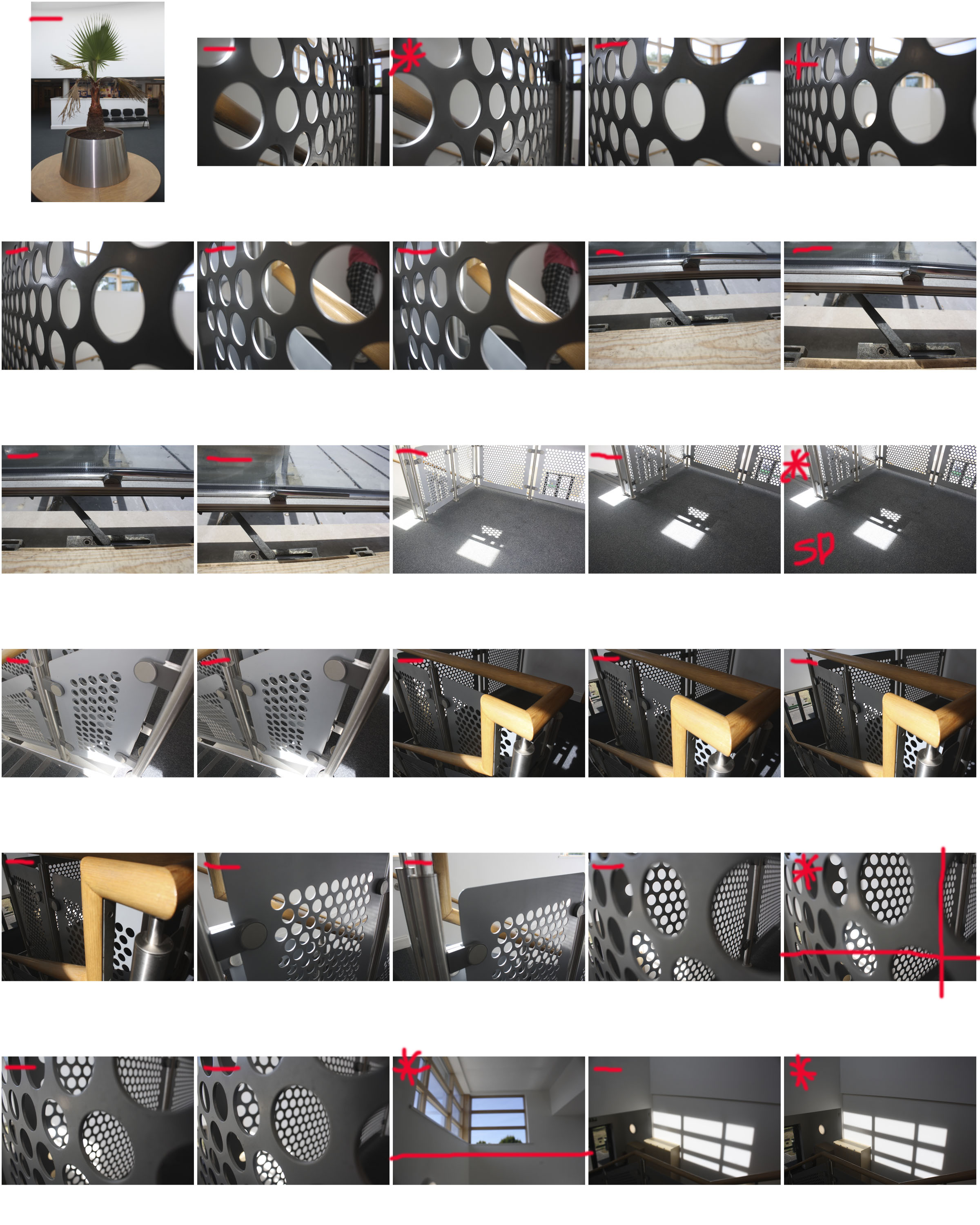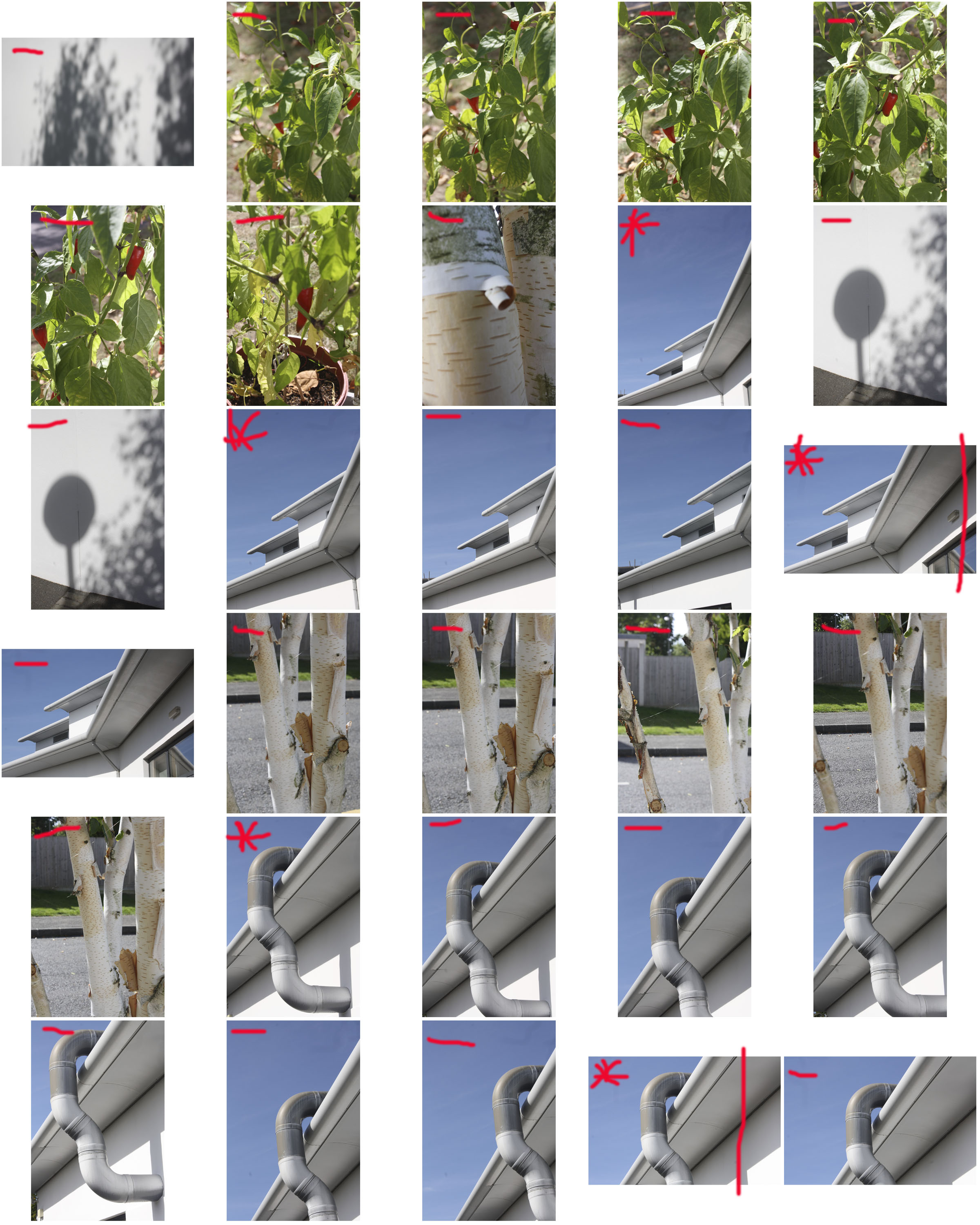CONNCEPT AND IMAGE TAKING
The concept of this mini project was to capture an ordinary scrunched up piece of paper, in as many ways as possible, placing it in different environments and photographing it. I captured these photos on my iPhone therefore the exposure, shutter speed etc. options were very limited when working on taking these images; paying particular attention to composition to make up for what was lost in image resolution. I started this task first by capturing some very simple photographs near a window, the light hit from the right side of the room creating a small shadow. The blurred, yet very busy backdrop for the photo really made the crisp and sharp lines in the scrunched up paper stand out.
I then moved on to making a black infinity screen on which I would capture my next set of photos. The stark contrast between the bright white paper and pitch dark background, again make the ball stand out. There is some differentiation created on the infinity screen by the light shining in from the right hand side, giving it tonal differences that can be clearly seen and make the balls shadow be seen more easily.
I then thought about incorporating movement into my photos, therefore I asked a classmate to drop the ball from a height. Although difficult to capture, I was able to get a few shots which illustrate the dropping motion of the ball. These photos though are compromised in quality with the ball having motion streaks.
I then again thought about different items I could incorporate into the images, therefore I placed the paper ball in a geometric sculpture. The wire sculpture is again very dark giving good contrast between the ball and paper. Also the contrast in shape from the randomly scrunched paper and the sharp, geometric lines of the sculpture give it a point of interest.
I then moved into placing the ball on top of a bright white vase. The incoming shadow from the left hand side of the picture give both the vase and the paper very dramatic and deep shadows which cut through the sea of whiteness giving the illusion of tonal differences. Lastly, I played around with the concept of geometry again, creating some origami which I then captured on a black backdrop, I think this gave a similar effect as using the geometric sculpture in my photos.
This overall mini project was very interesting to do. The challenge of creating many different photos with just a single piece of paper was very challenging yet this made me think about photography in ways that i have never done before. The simplicity of paper can be adapted and changed to become beautiful images that are very captivating and interesting.
MOST SUCCESFUL PHOTOS
In my opinion the most successful photo was indeed the paper ball atop of the white vase. I feel that this photo was really able to capture multiple interesting aspects of the vase and the paper ball. Firstly the light hitting from the left side of the picture creating the dramatic shadows, highlight the irregular creases and folds within the paper which are an important and interesting aspect of the paper ball. Furthermore, the shadows are able to distinguish both the white background and the foreground. The vase in these photos is also an aspect which further illustrates the interesting nature of the paper ball by again creating contrast in shape. It is very smooth, with regular curves all around, the ball on the opposite, possesses sharp and linear edges. A noteworthy aspect of the paper ball is that it was made from transparent paper, the thicker texture allowing it to create stronger geometric shapes. There are slight tonal differences with the vase, backdrop and ball. It is slightly more yellow toned whilst the ball and the backdrop are a lot more blue based.
Another very successful photo was the paper ball inside the black wire sculpture. This photo again captures the contrast between geometry and the random edges and curves of the paper ball. The dark metal is the center of attention, bringing it into the foreground of the photo whilst the white paper ball sits in the back ground. The light shining in from the left hand side of the photo creates a slight shadow from the paper ball and the wire sculpture, which fades into a darker shadow into the right hand side. i cropped the image and increased the contrast in order to make the photo more dramatic and dark.
The last photo which i thought was very successful was the paper ball on the black infinity screen. the paper which the ball sit atop of was very blue based in co lour therefore when i saturated the image, you are able to see different tones of black and blue. The contrast between the black screen and the white ball is also very striking in this photo. by increasing the contrast, I was able to create a pitch black backdrop. The light incoming from the left hand side of the photo creates a very slight yet noticeable shadow from the ball onto the screen.
CONTACT SHEETS
i made my final selection of images from the 86 I took by using contact sheets. I uploaded these onto Photoshop which I was able to manually draw onto with the brush tool. This was a very useful step i took when choosing the most successful photos from my selection. The red marks on top of the sheets made artwork in itself. The marks seem random yet to me they were a very useful prompt that reminded me of the steps i should take when editing and selecting the correct photos. I chose to make the photos monochrome as my final images are mostly black and white, therefore this helped me to visualize my final photos better.

